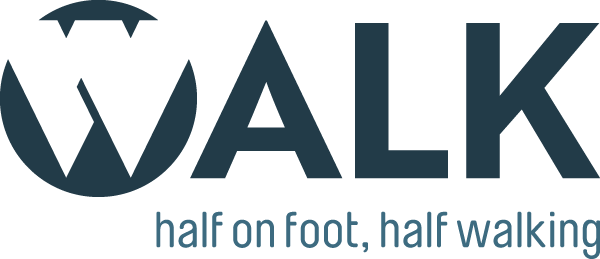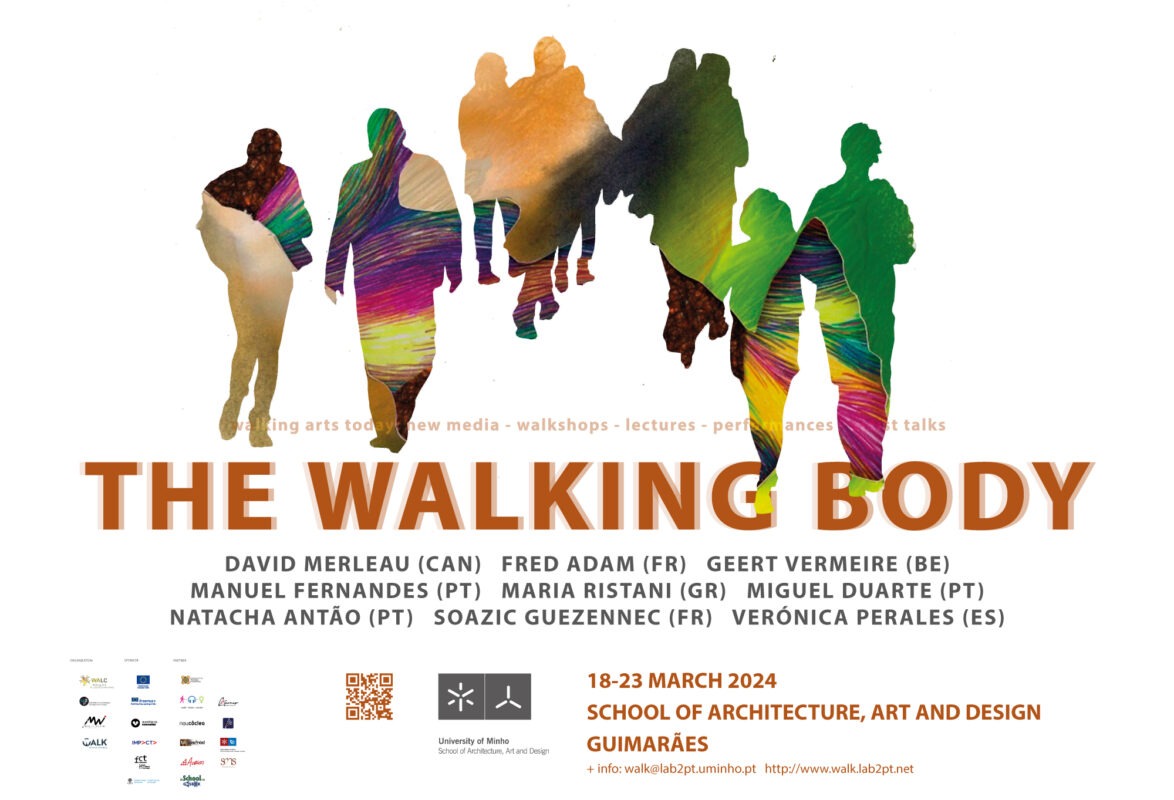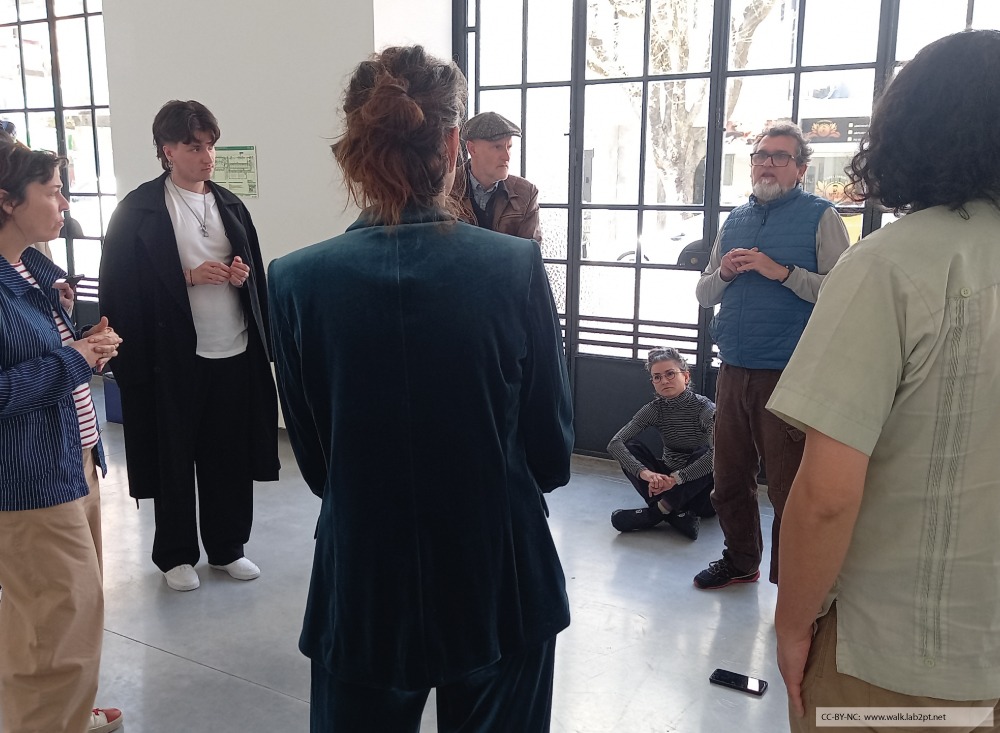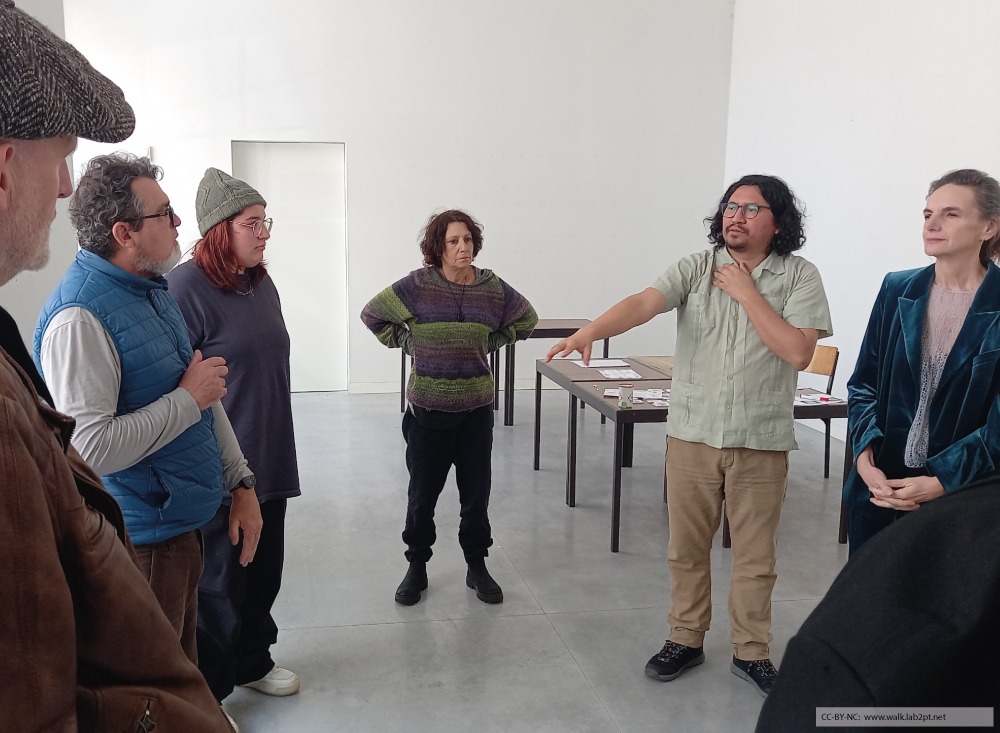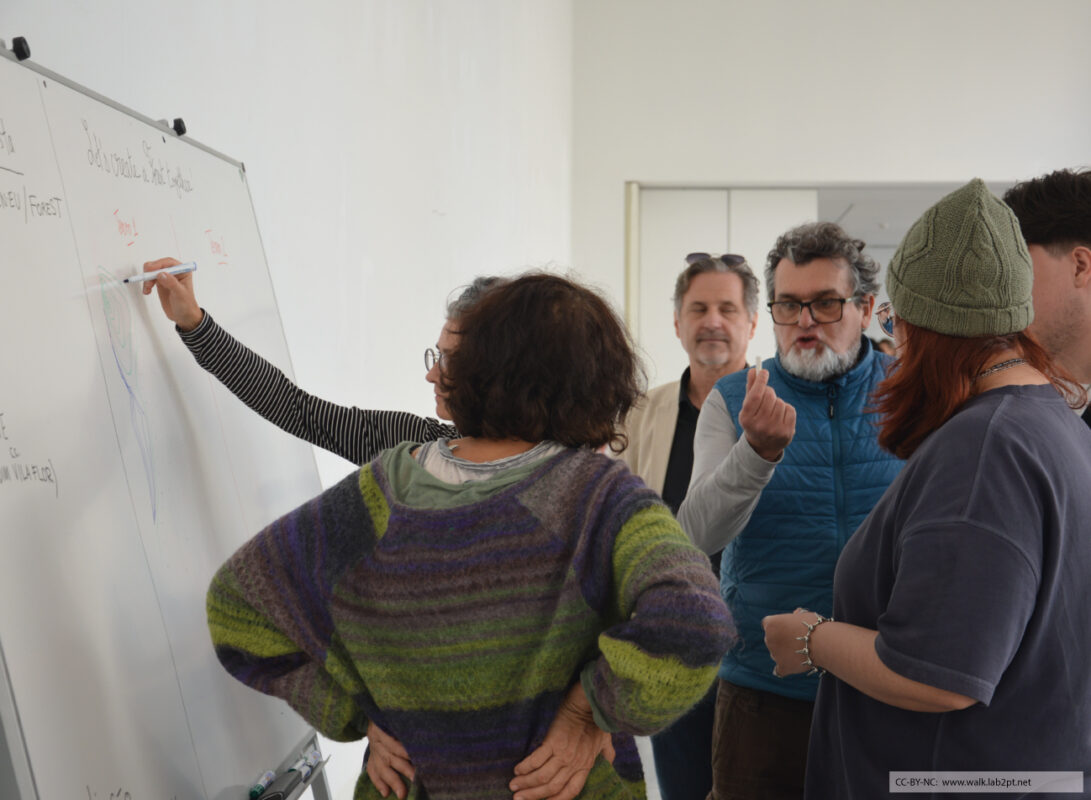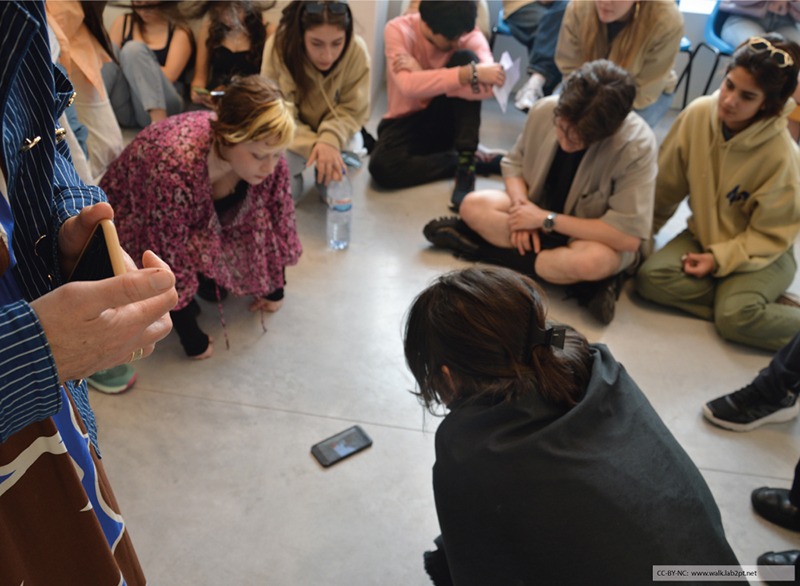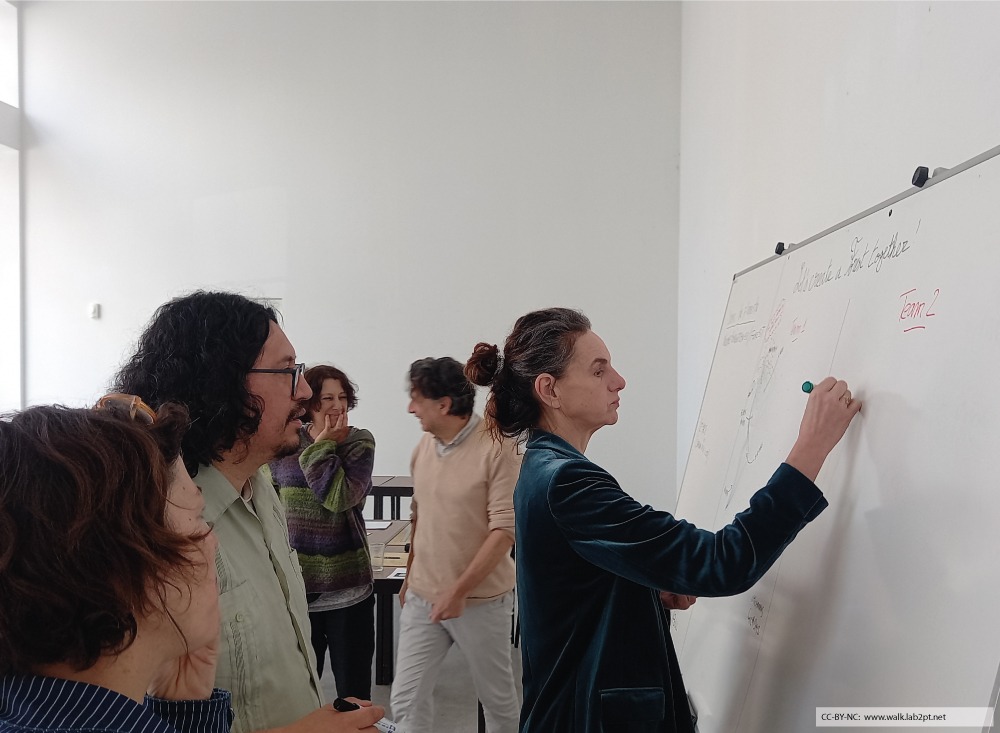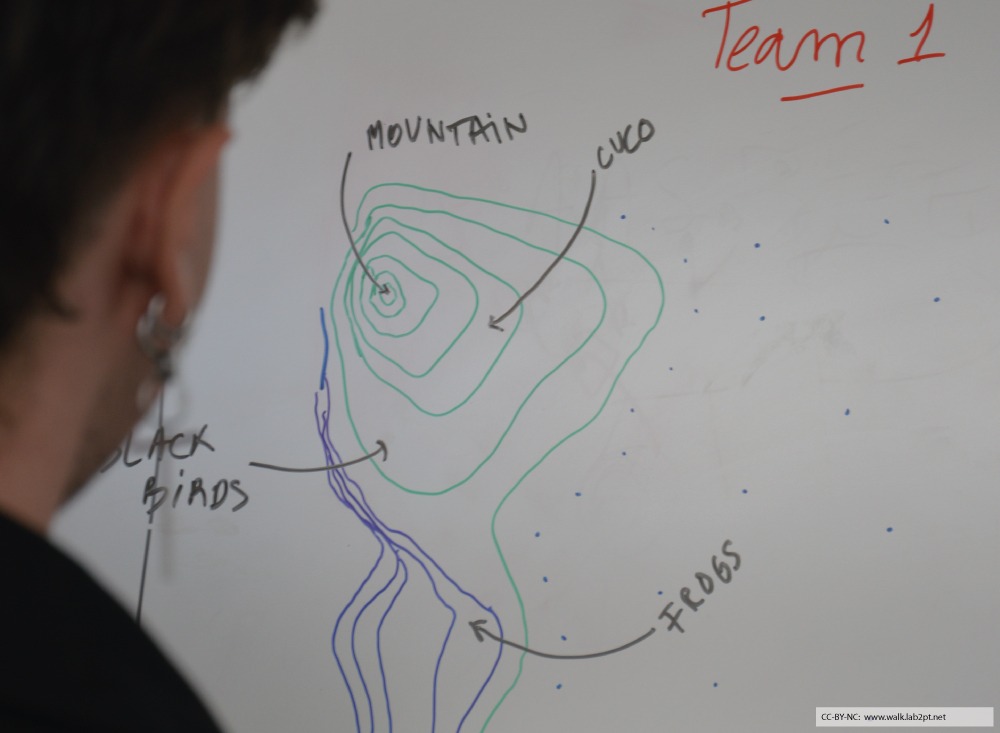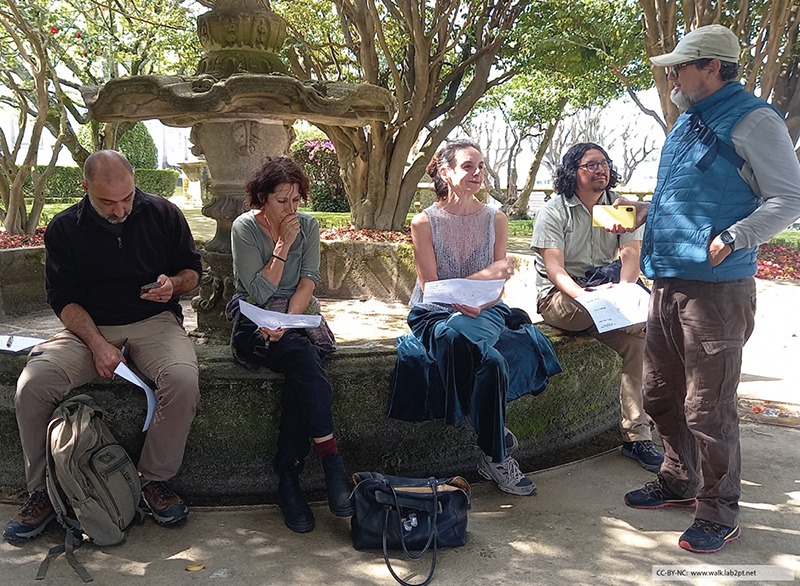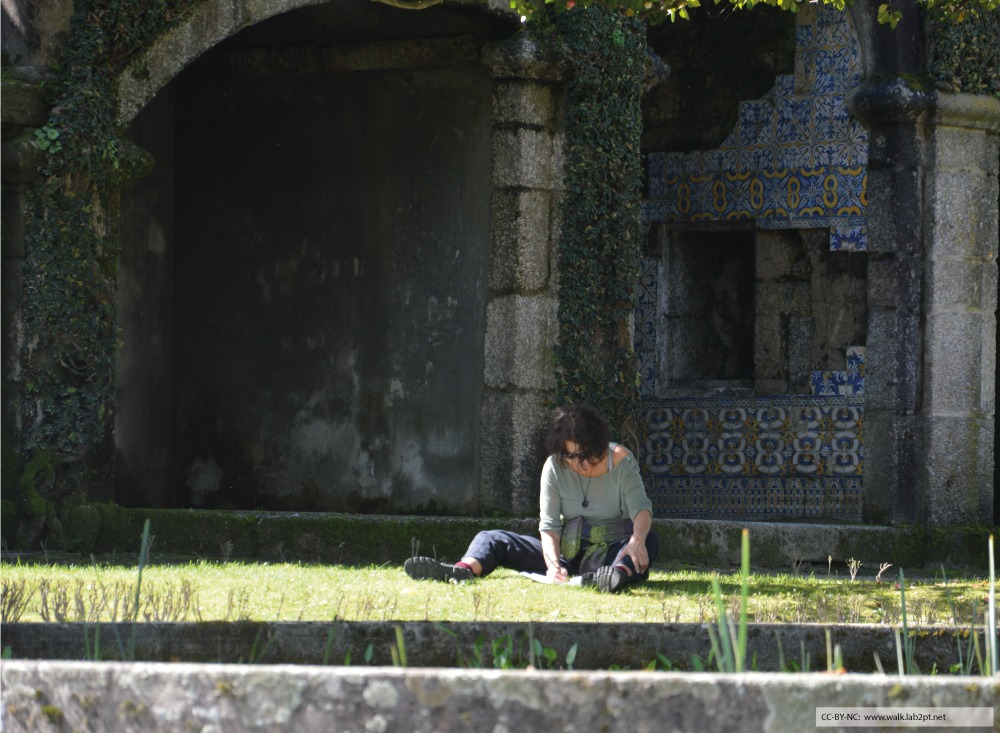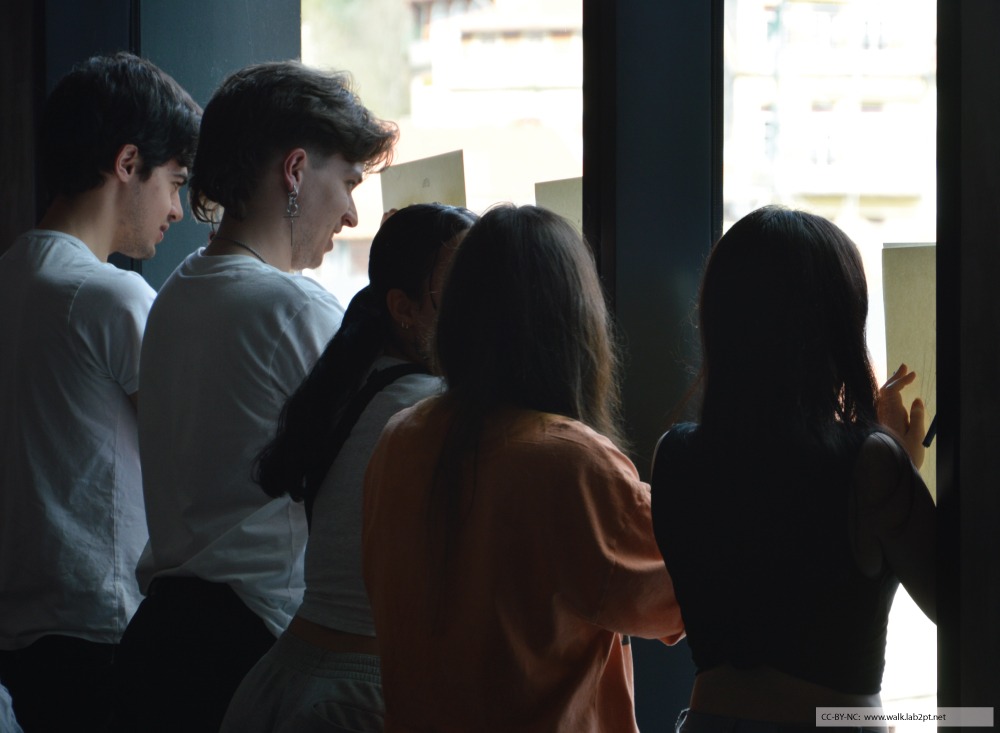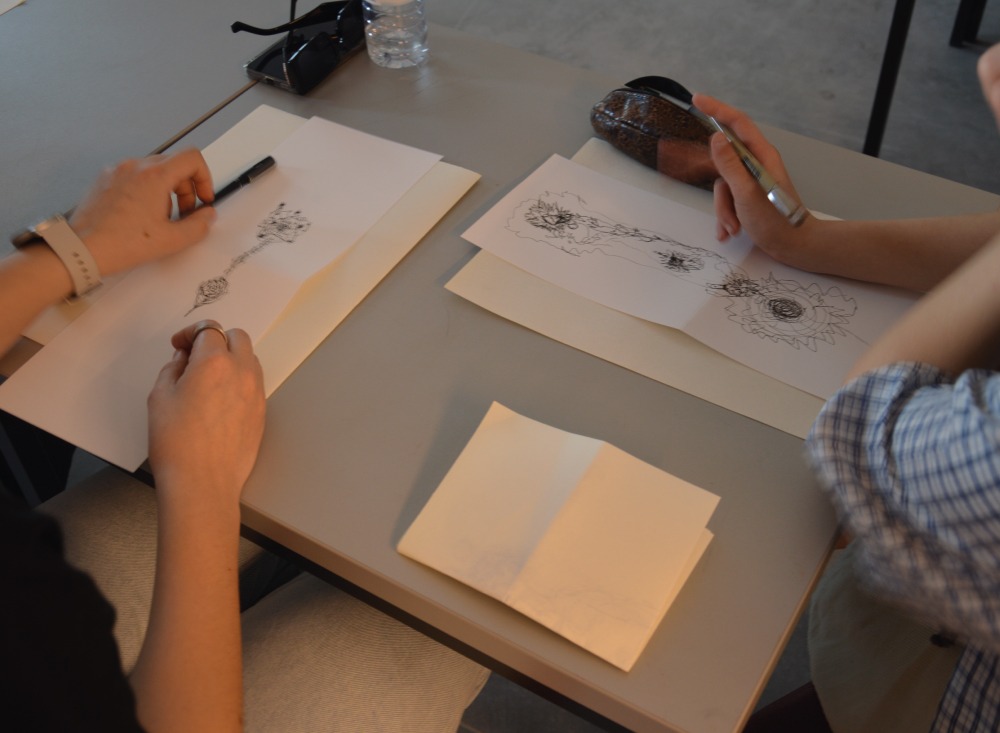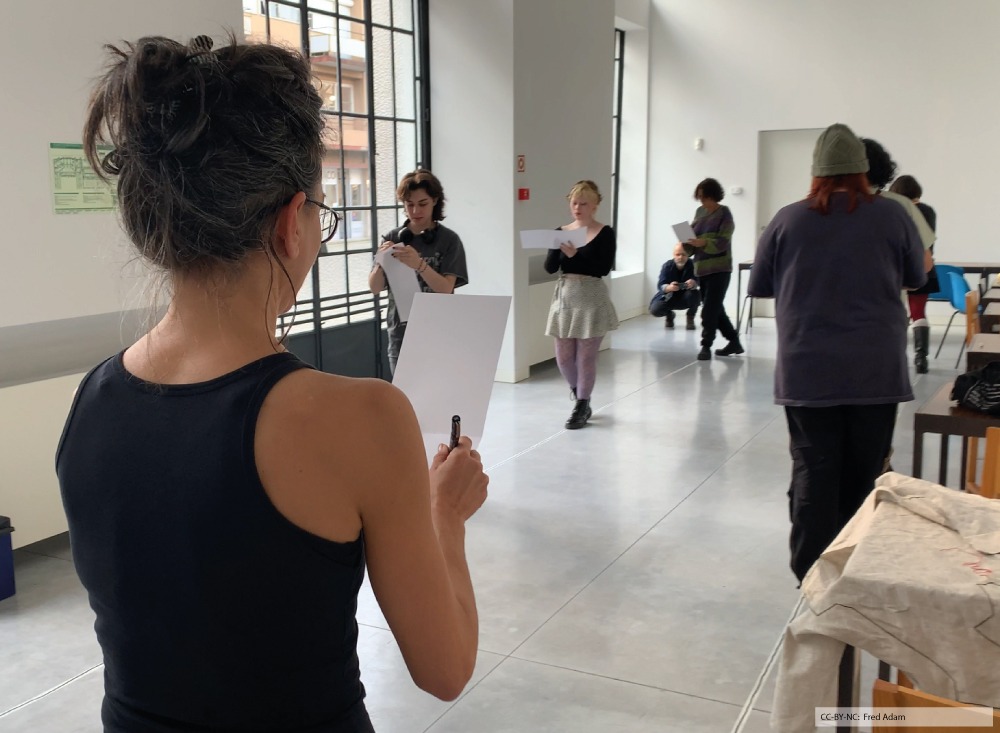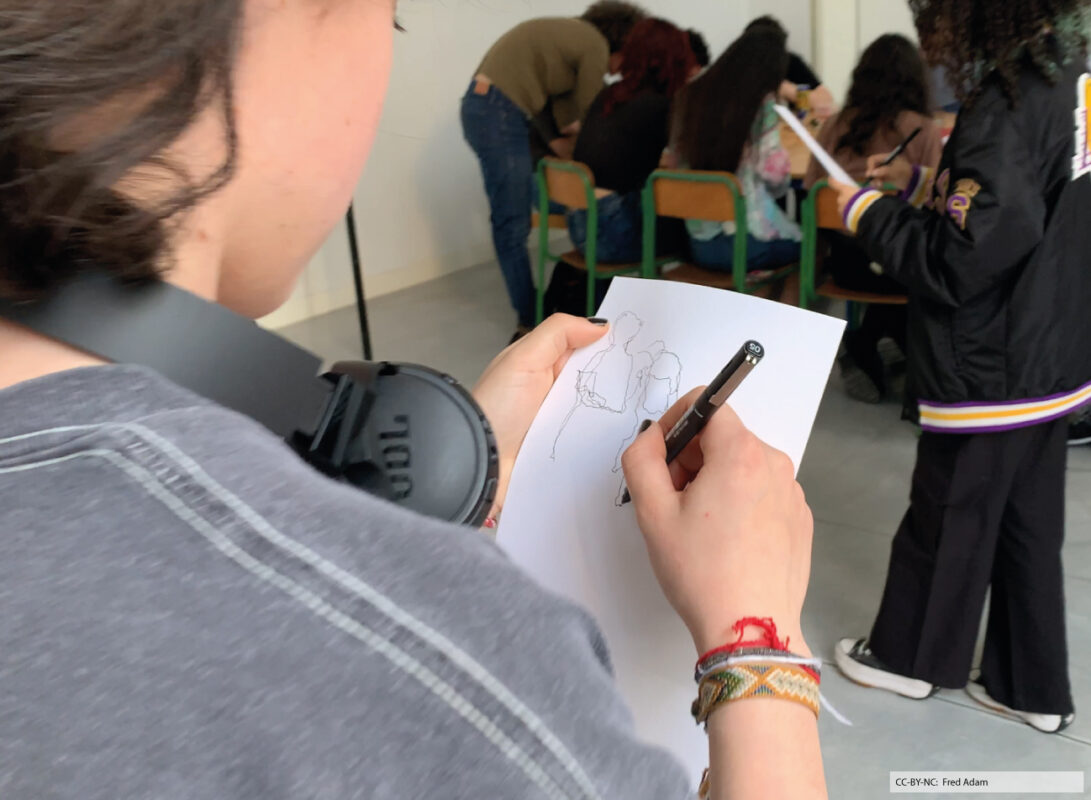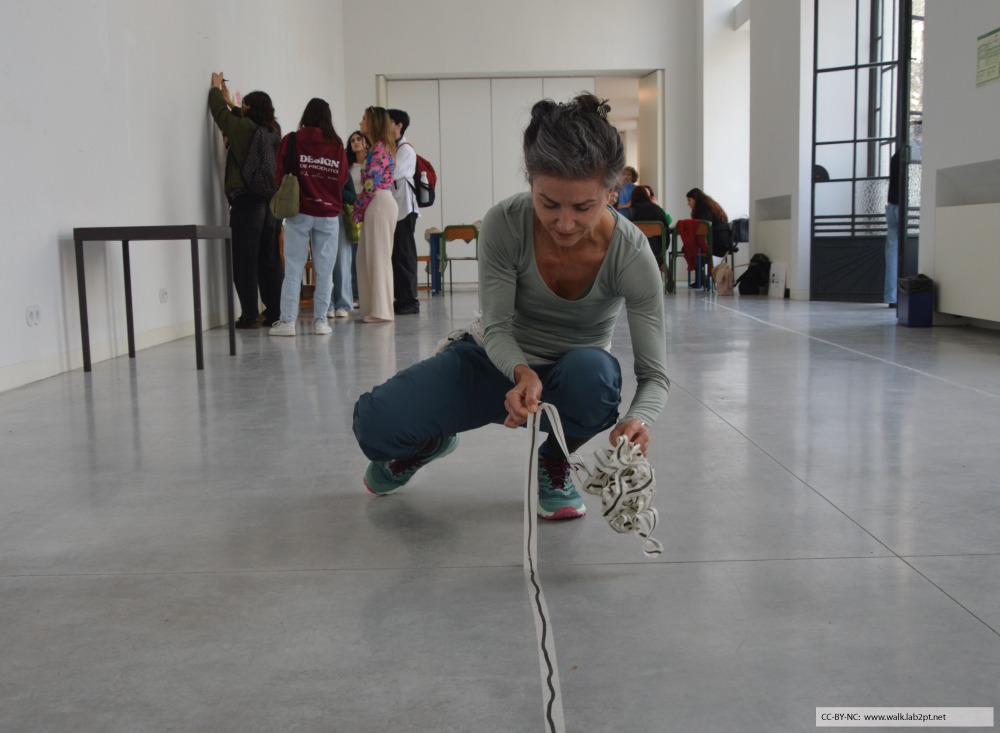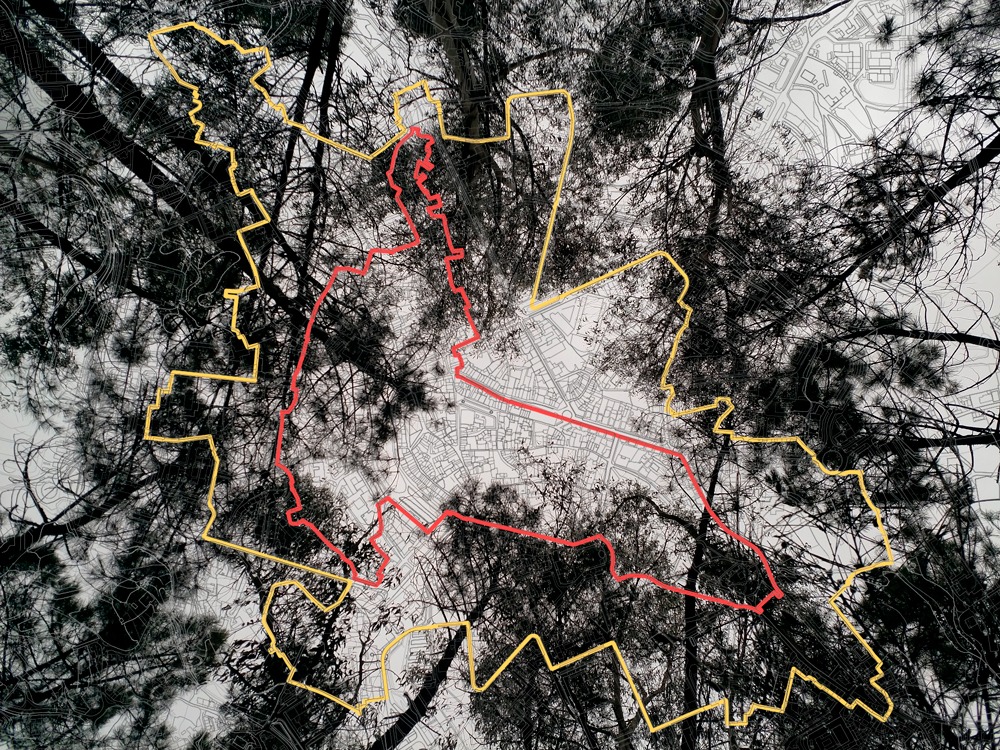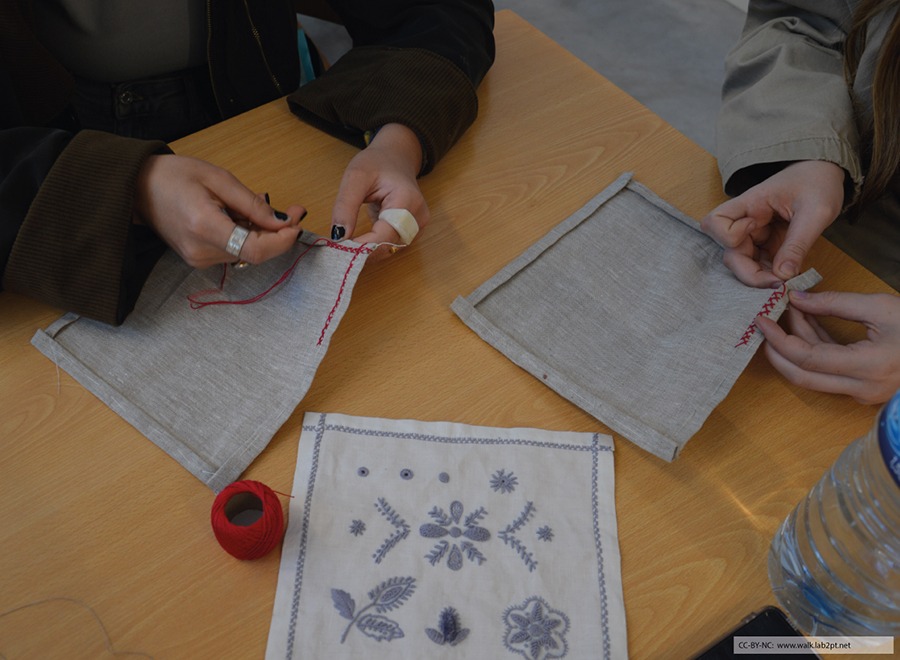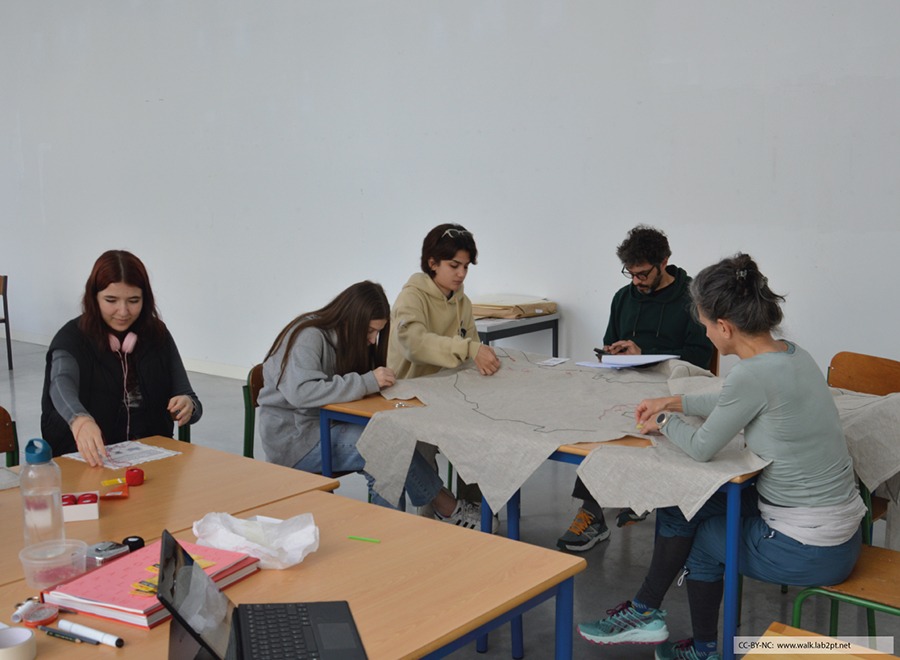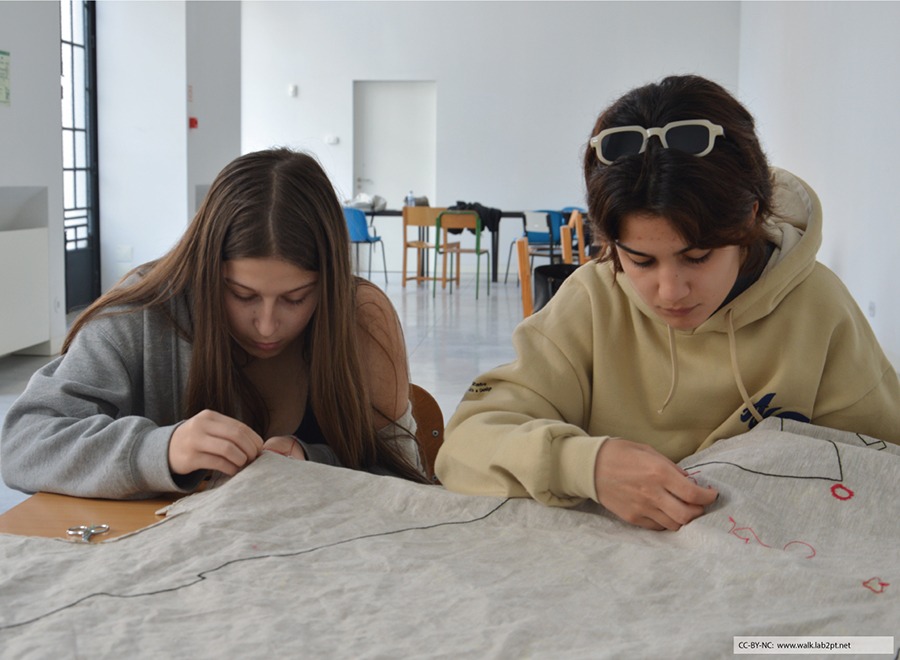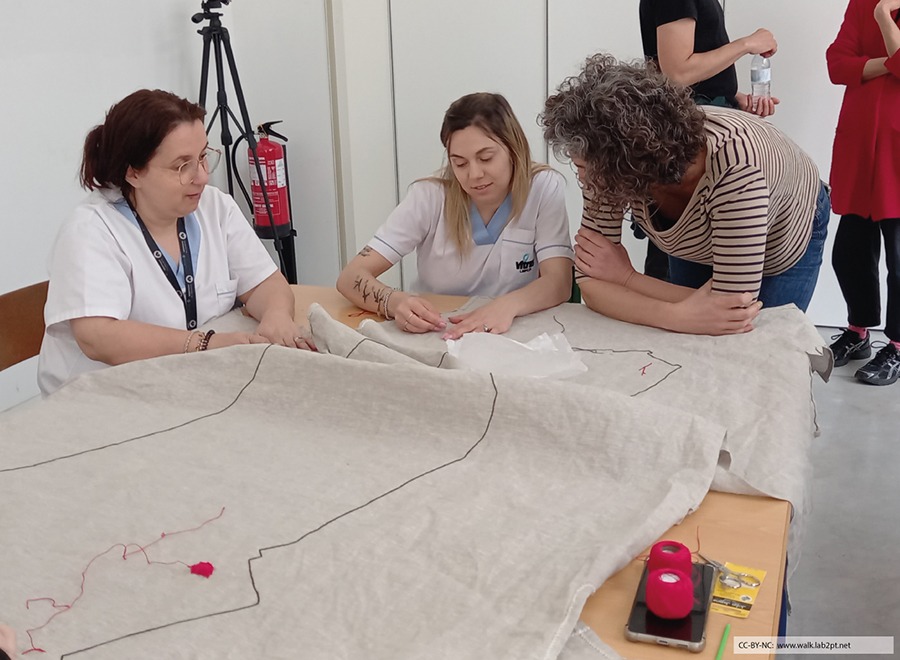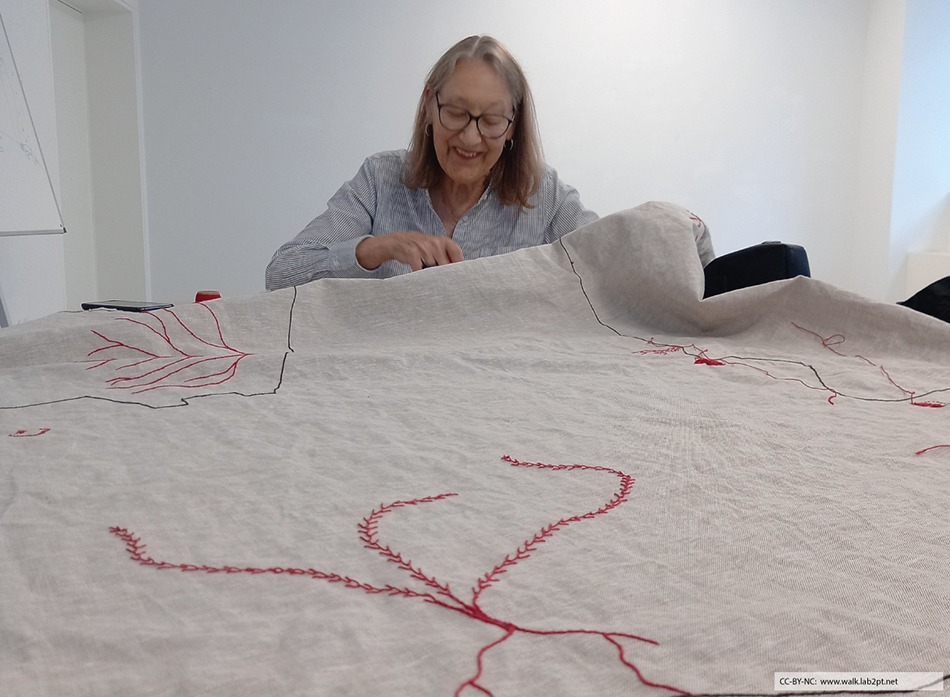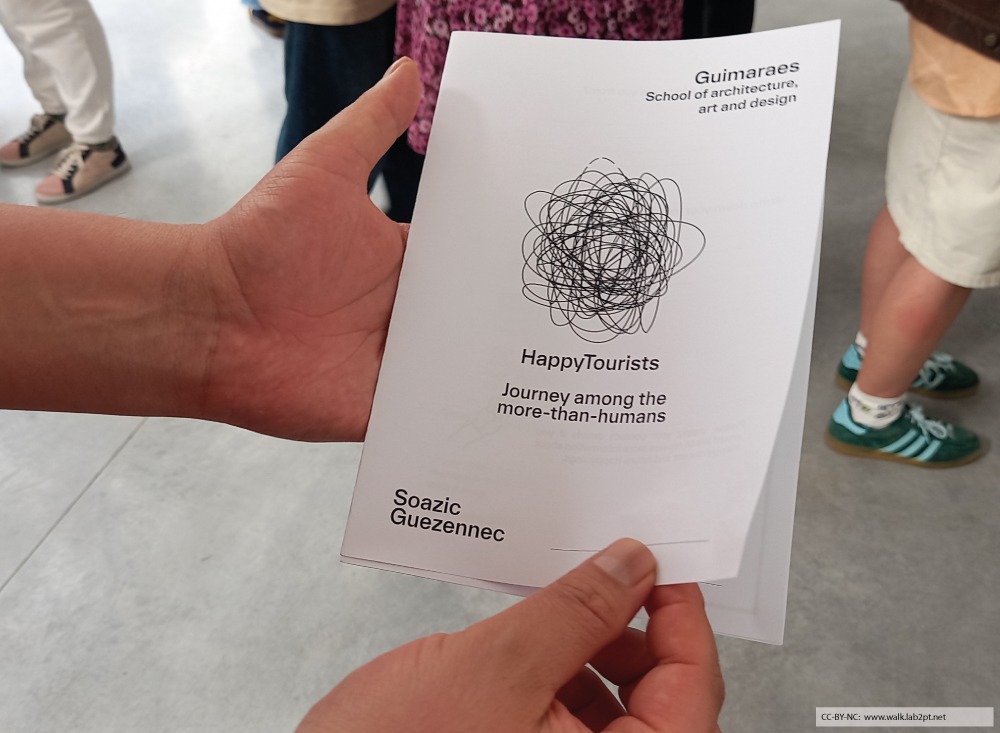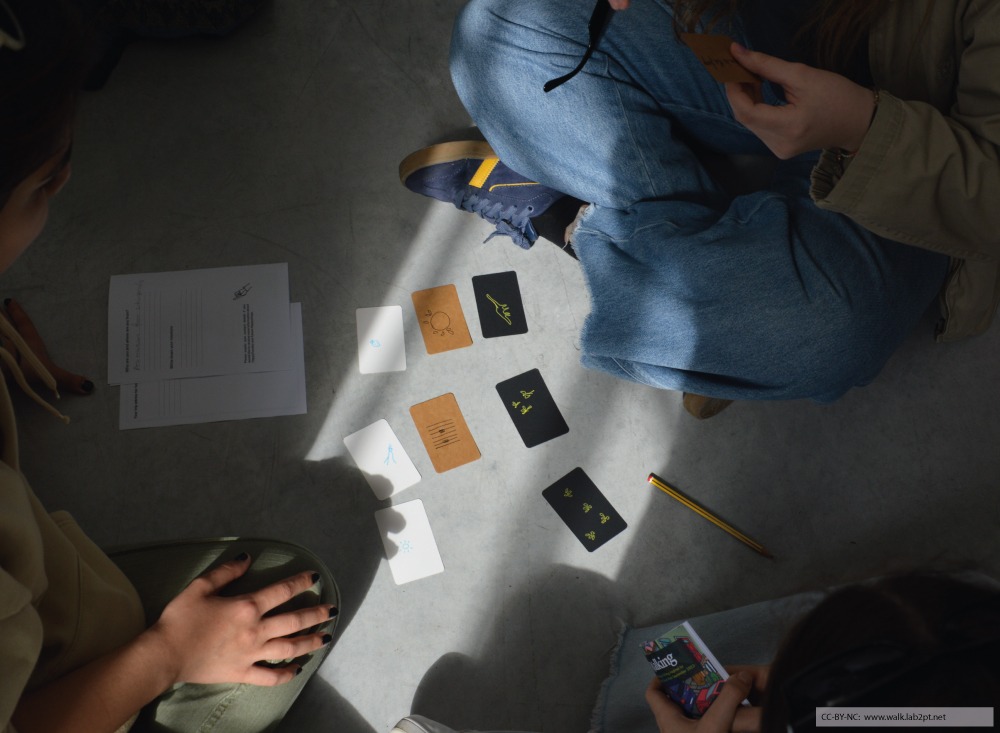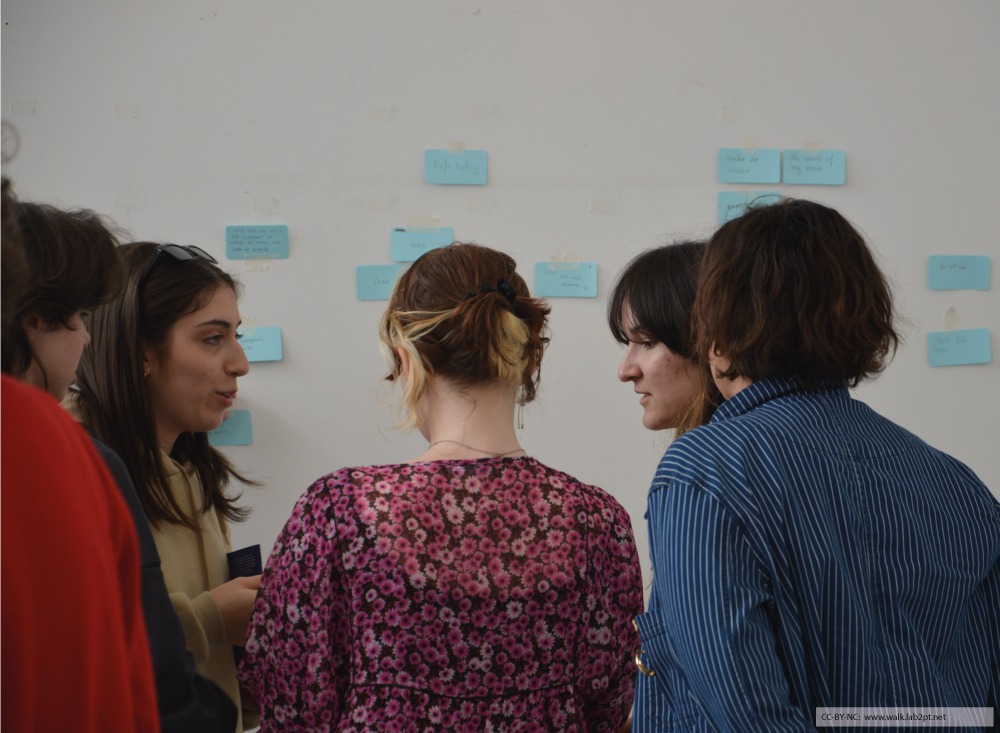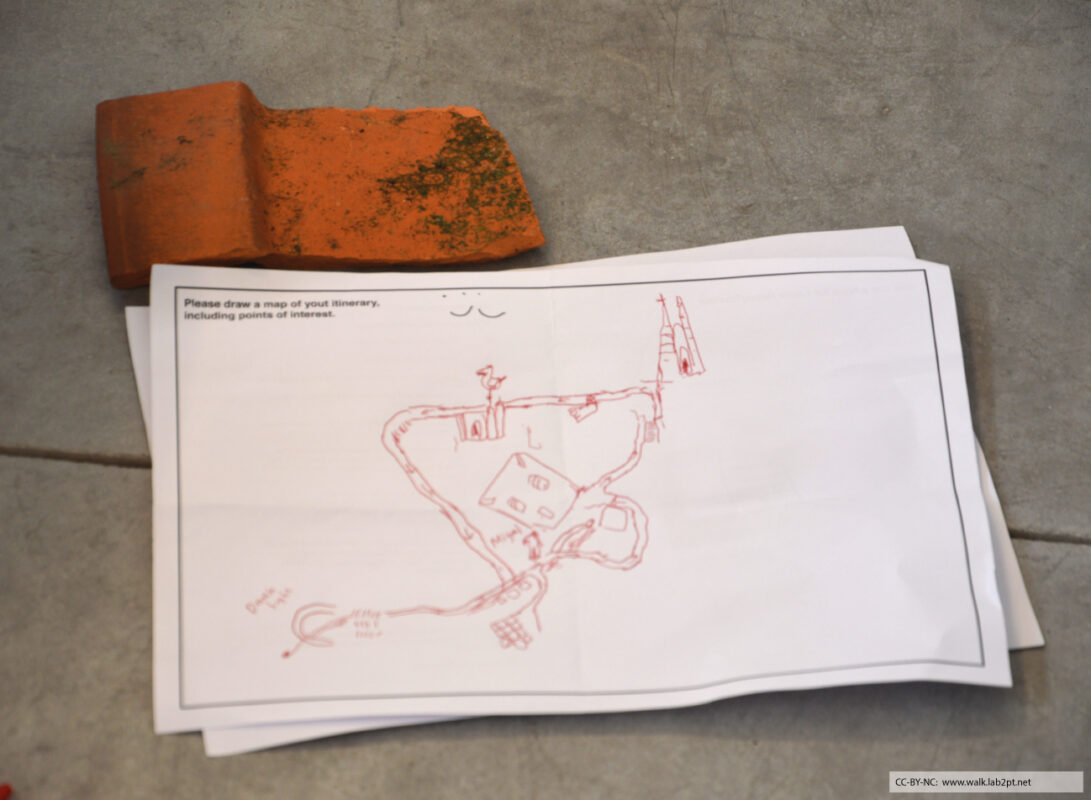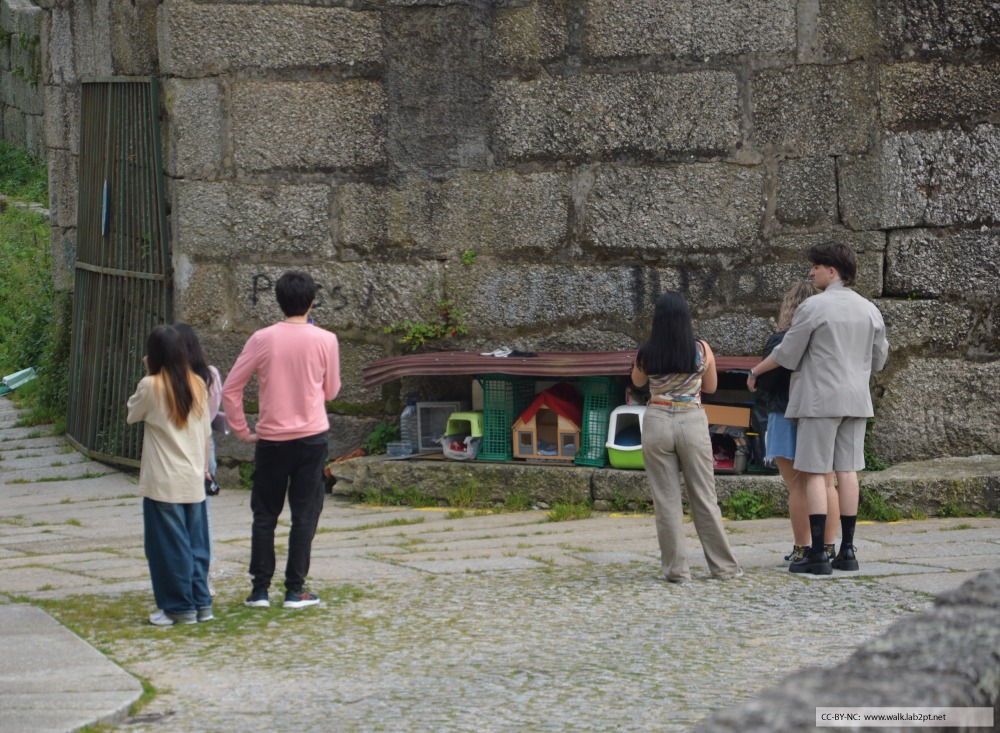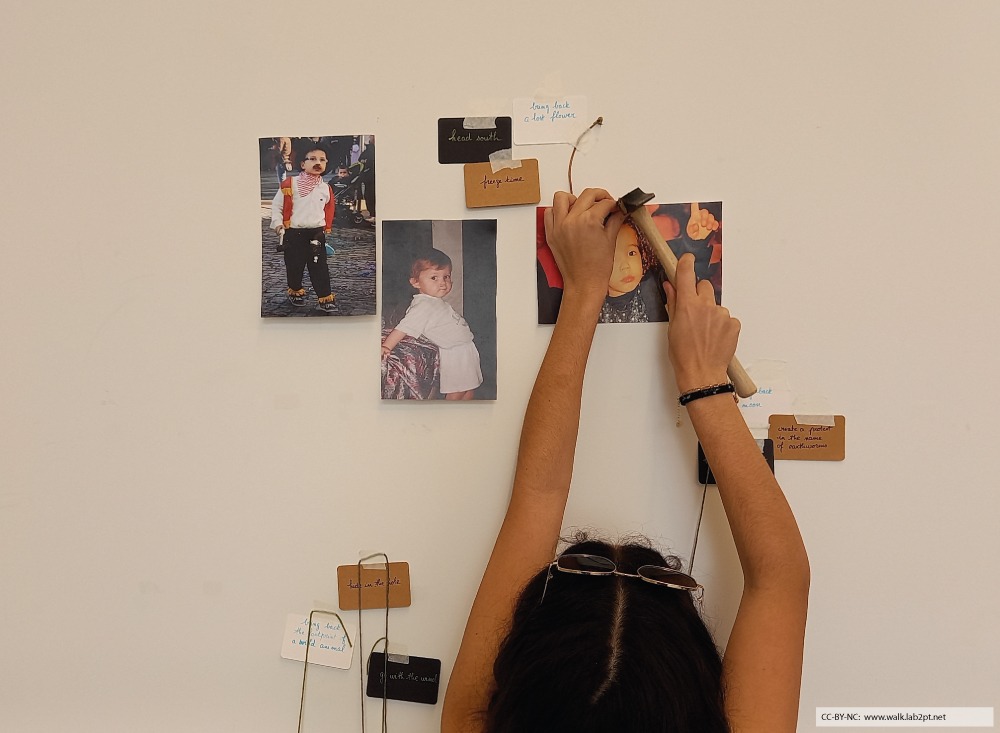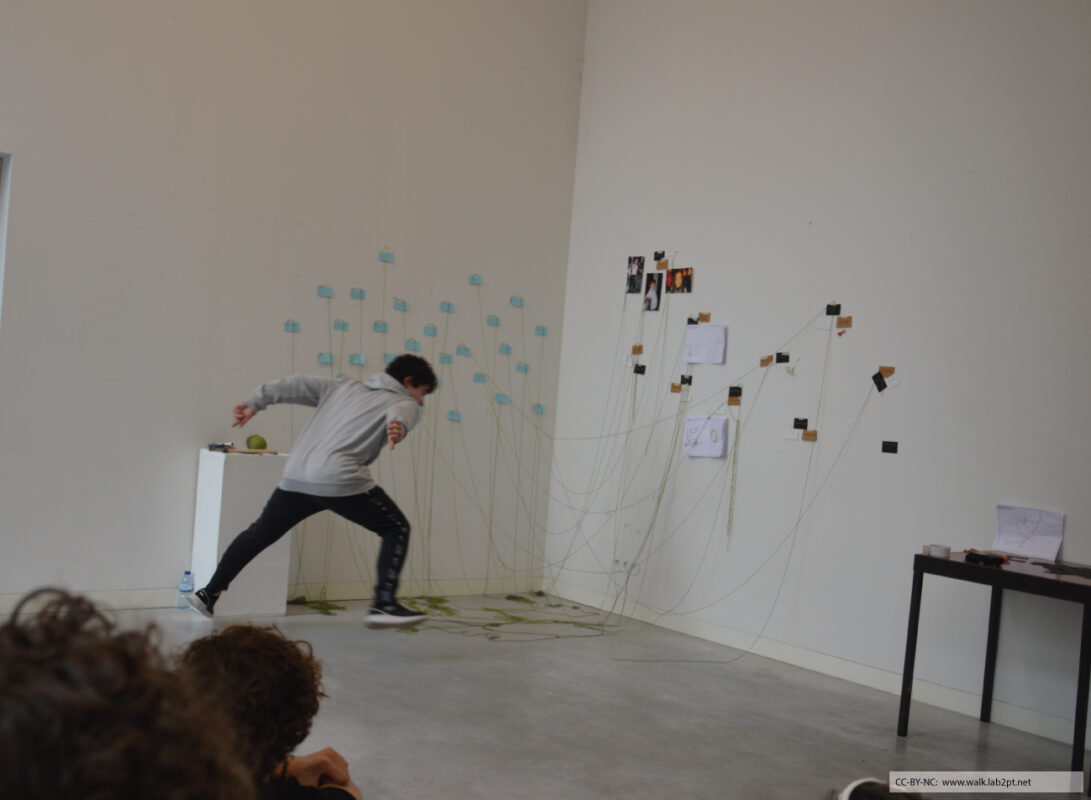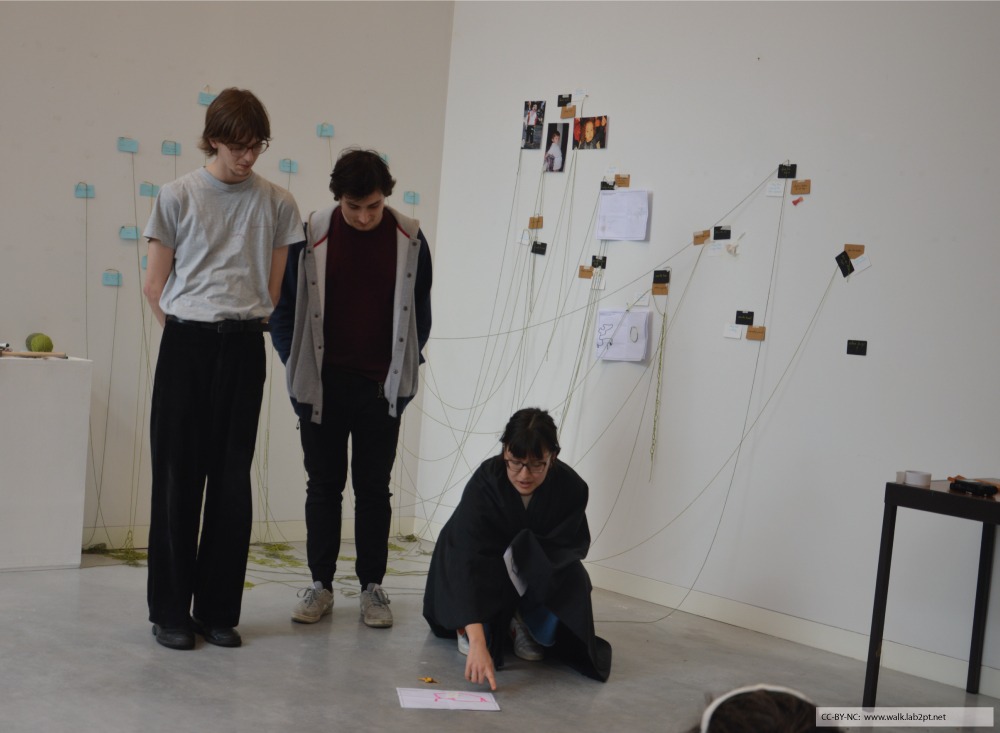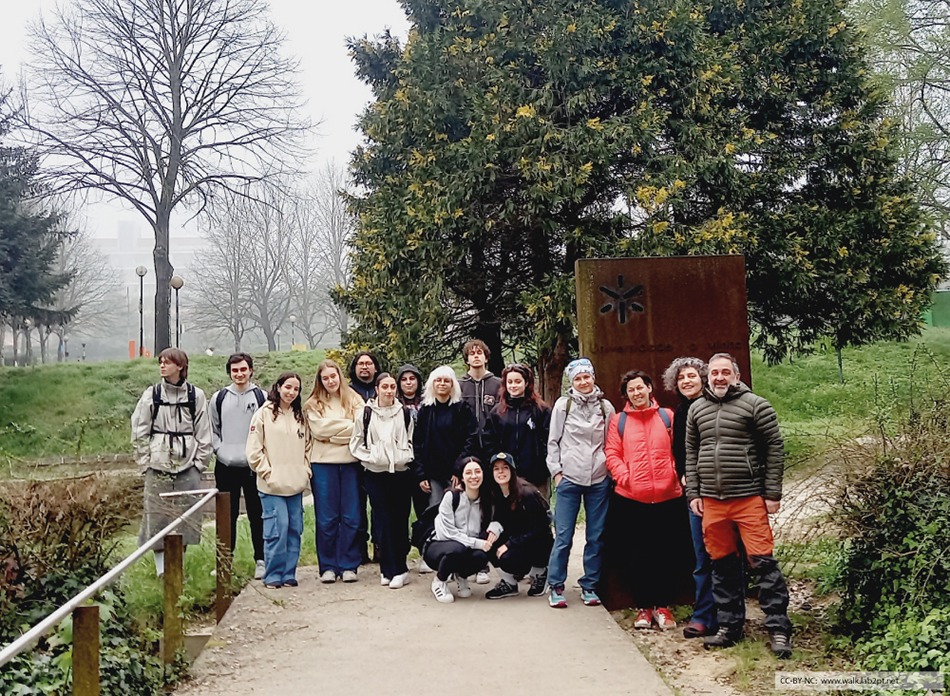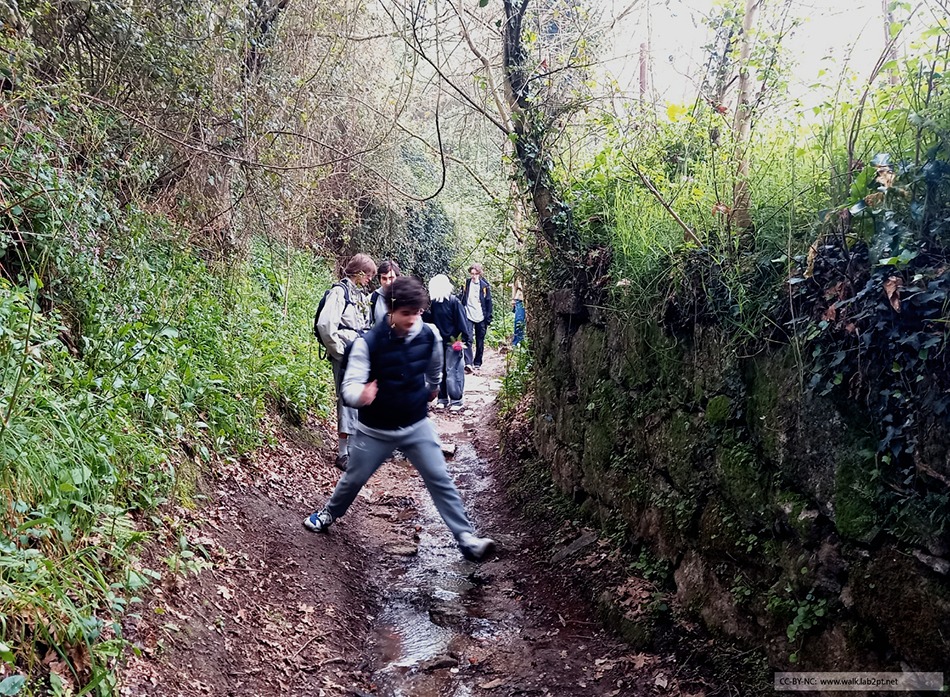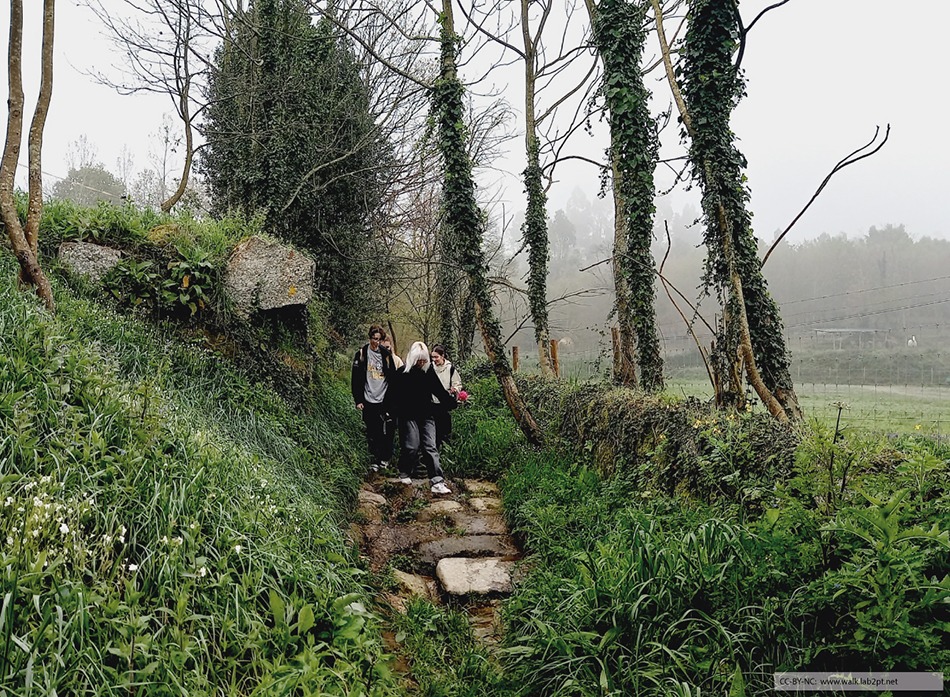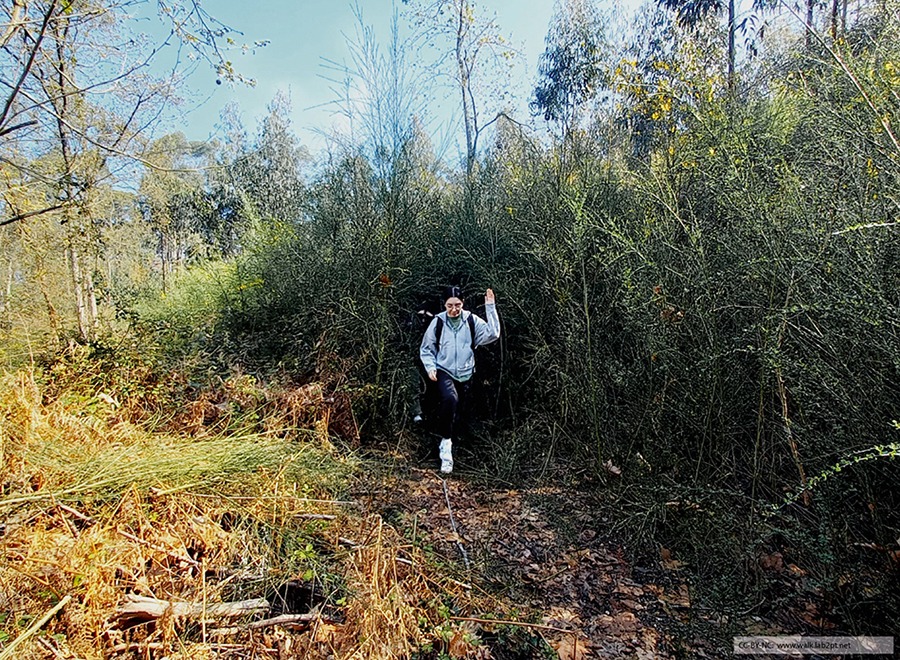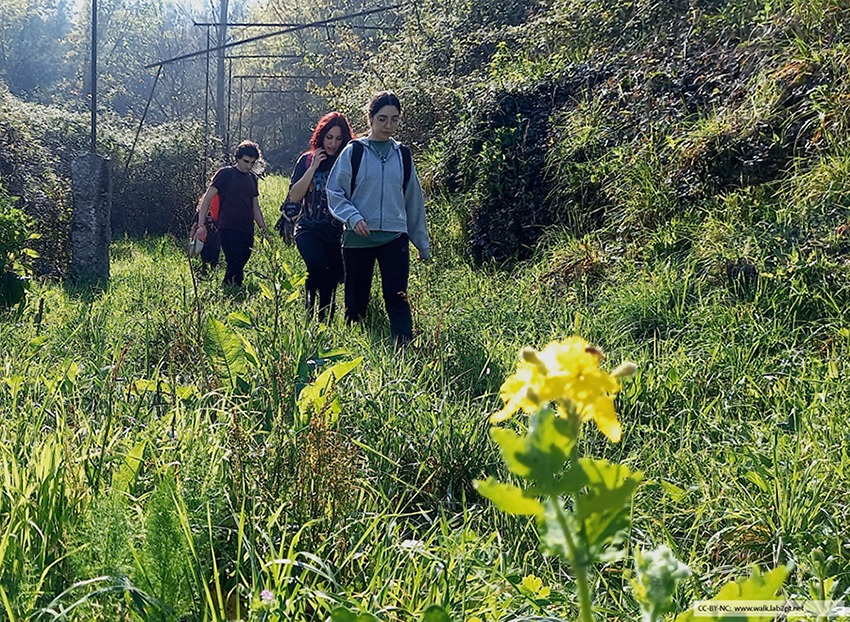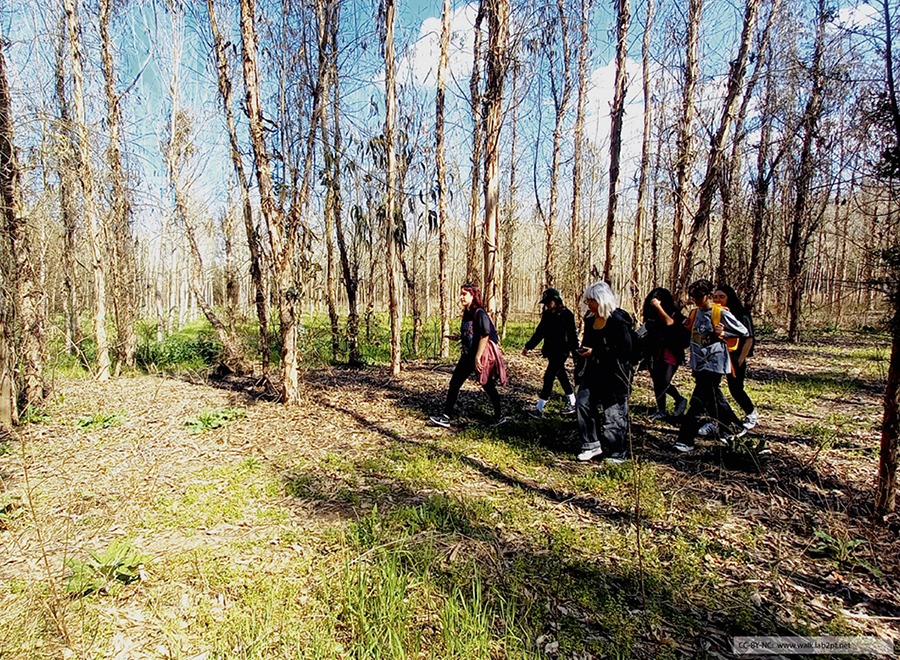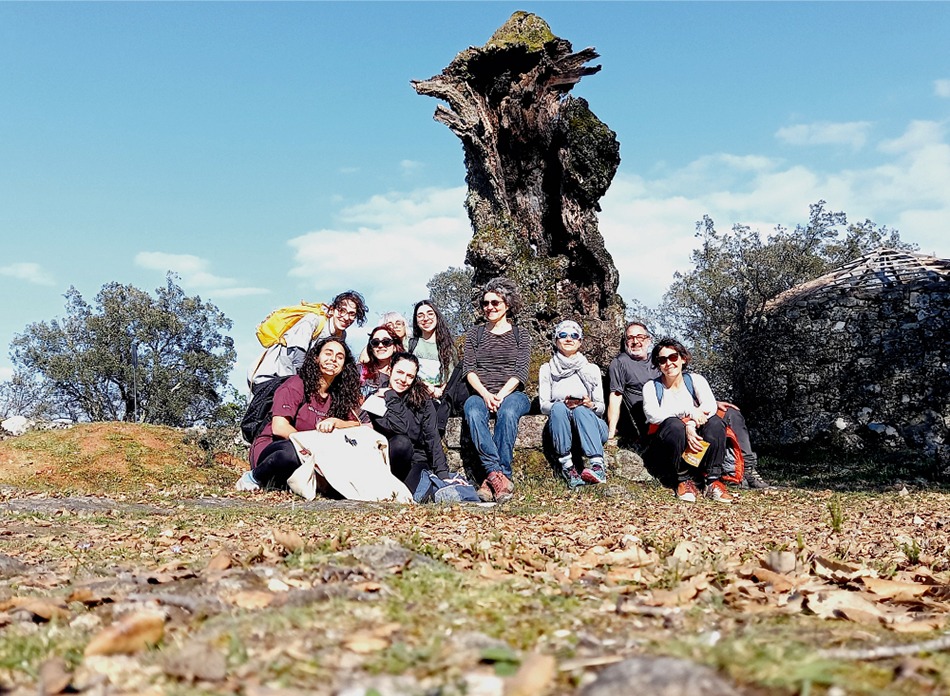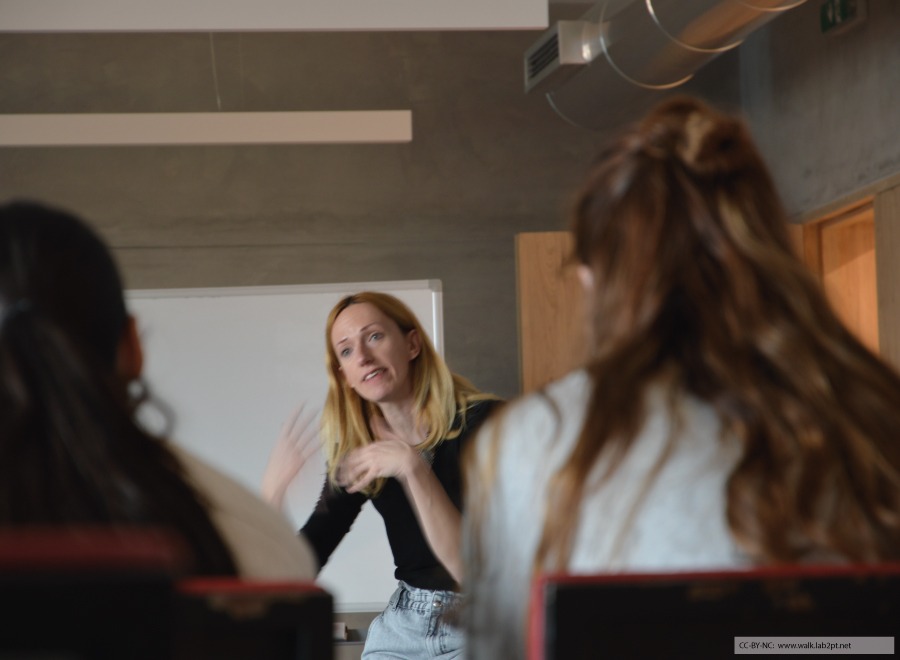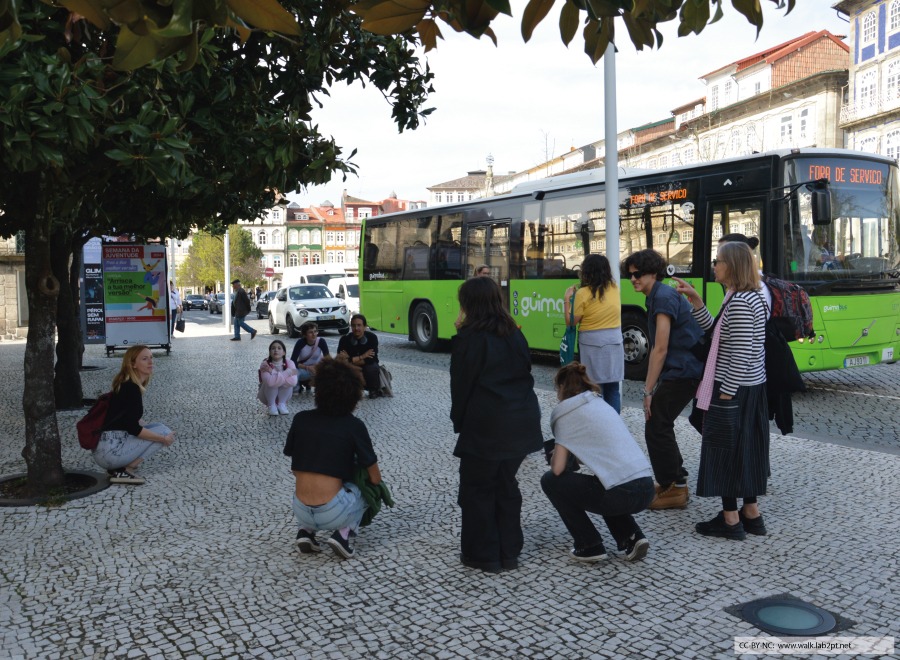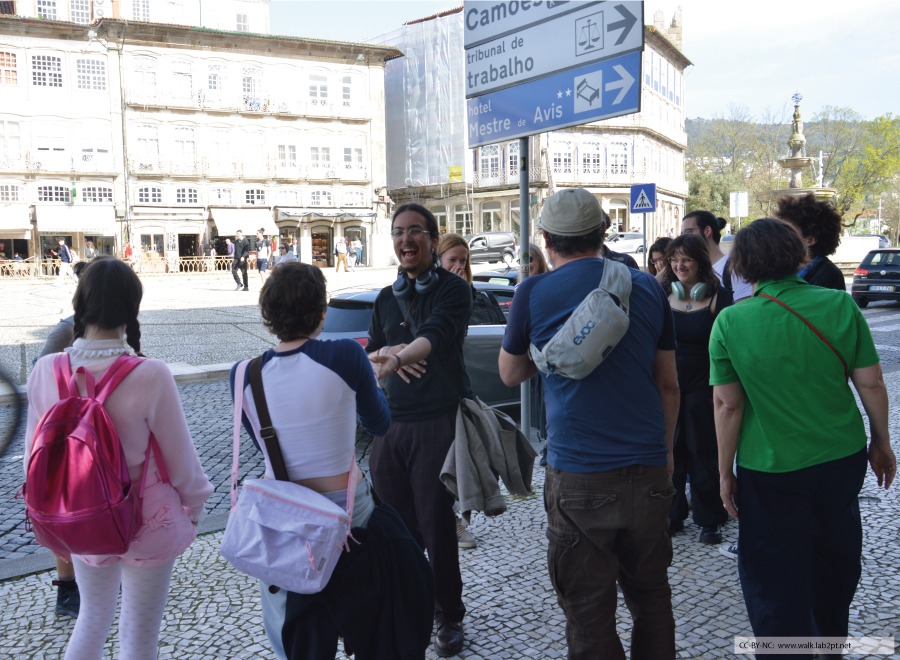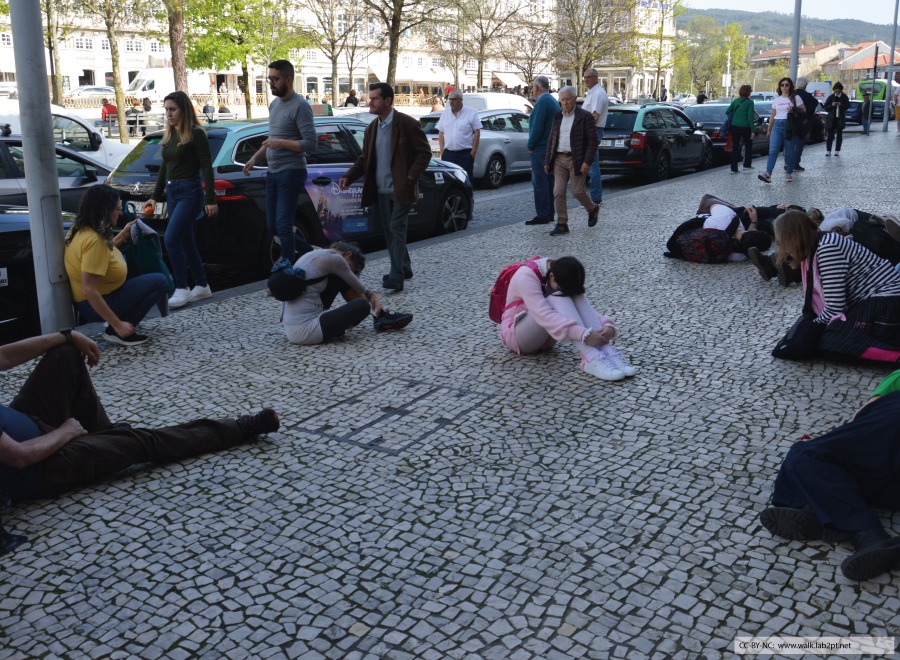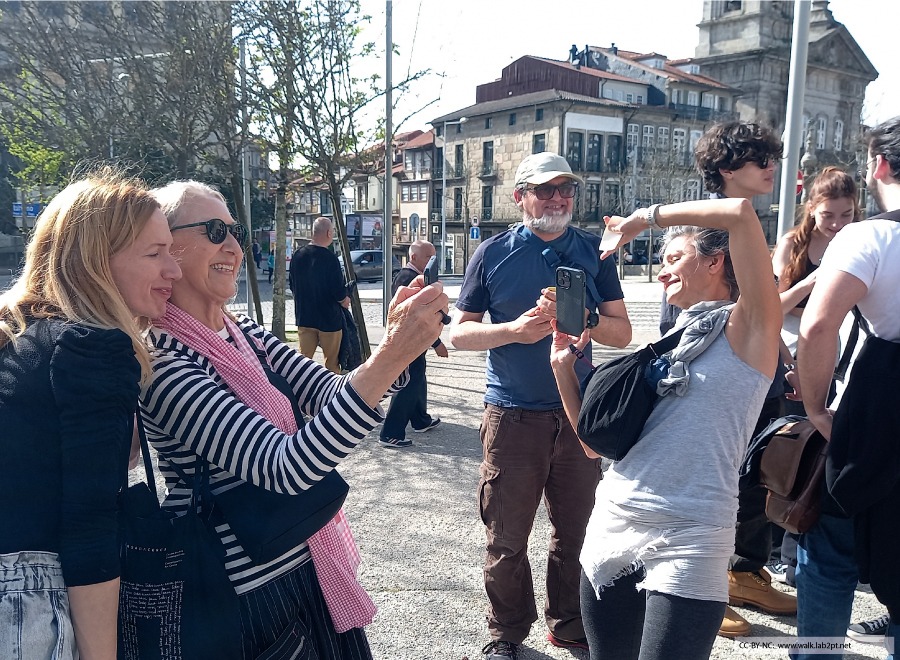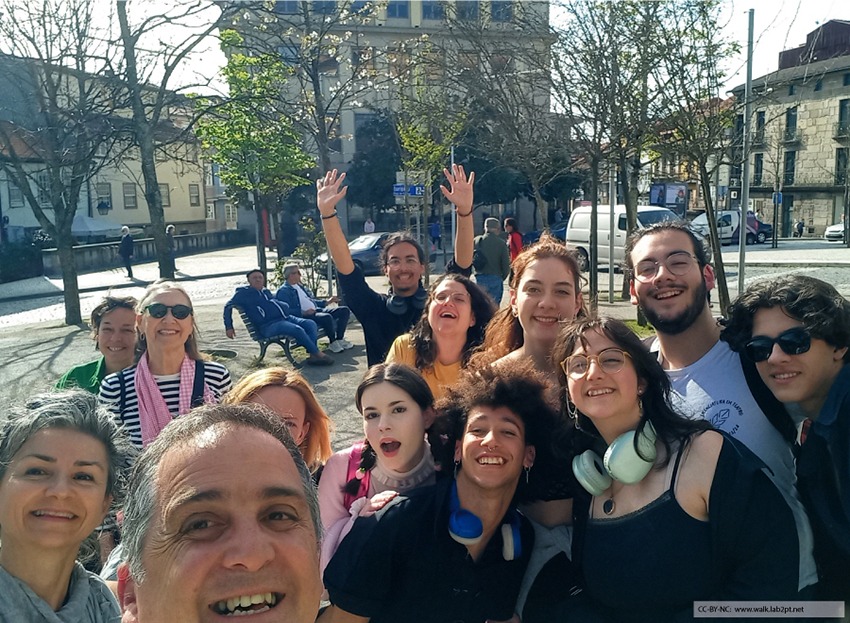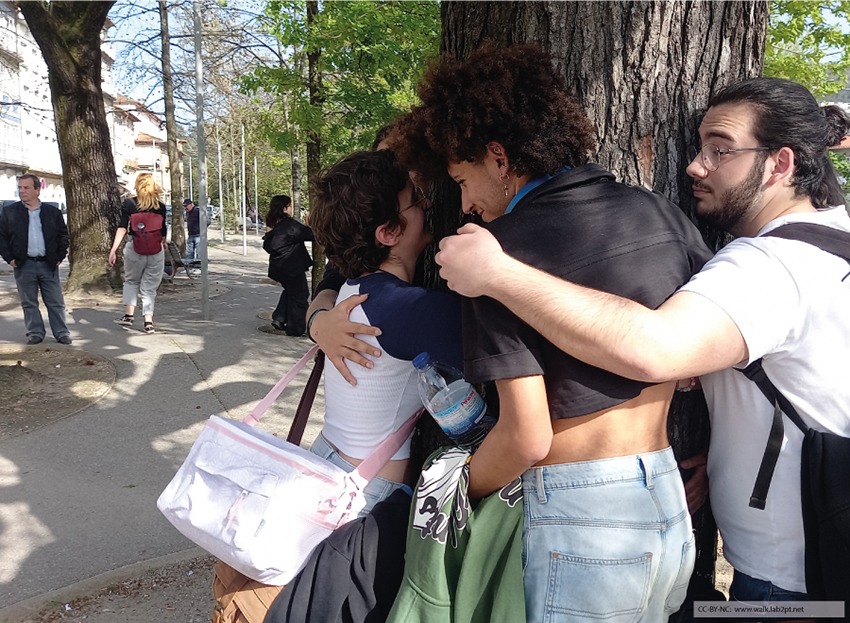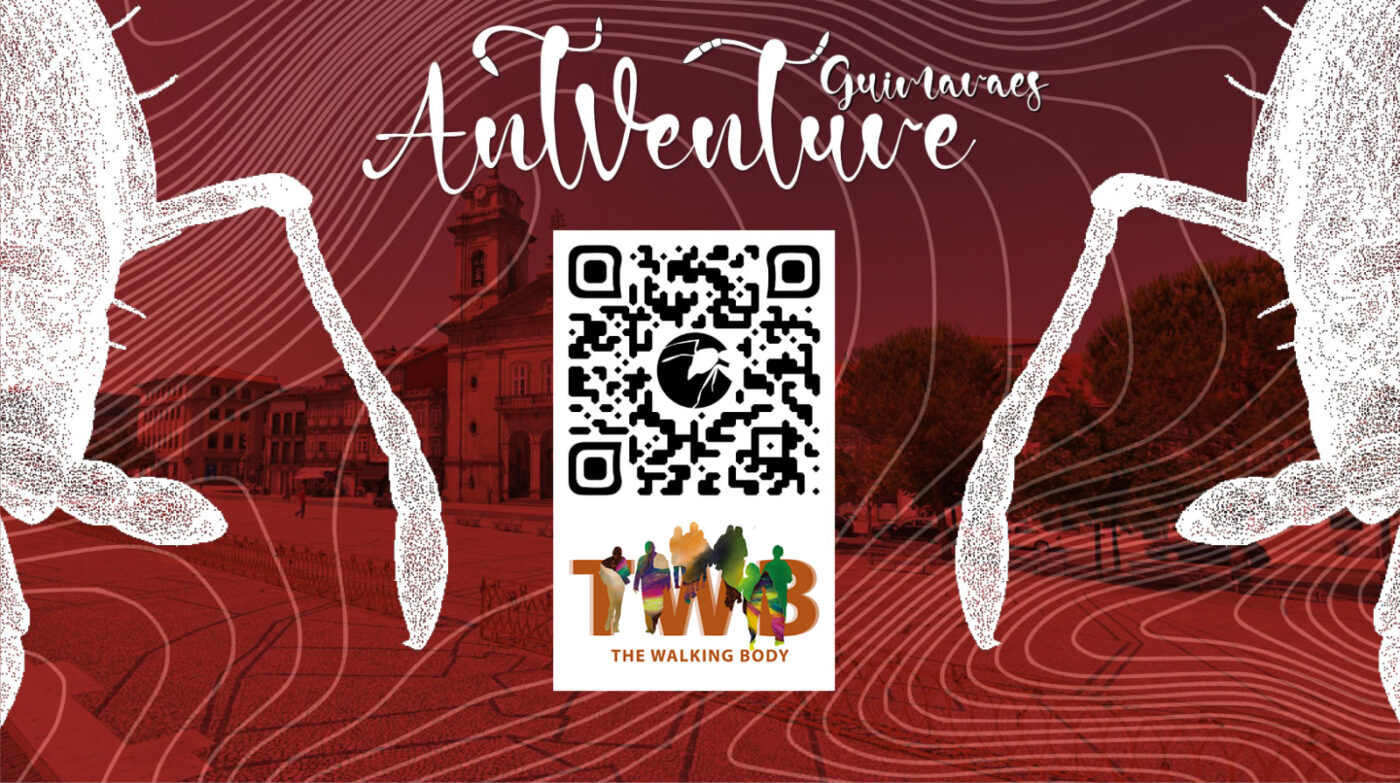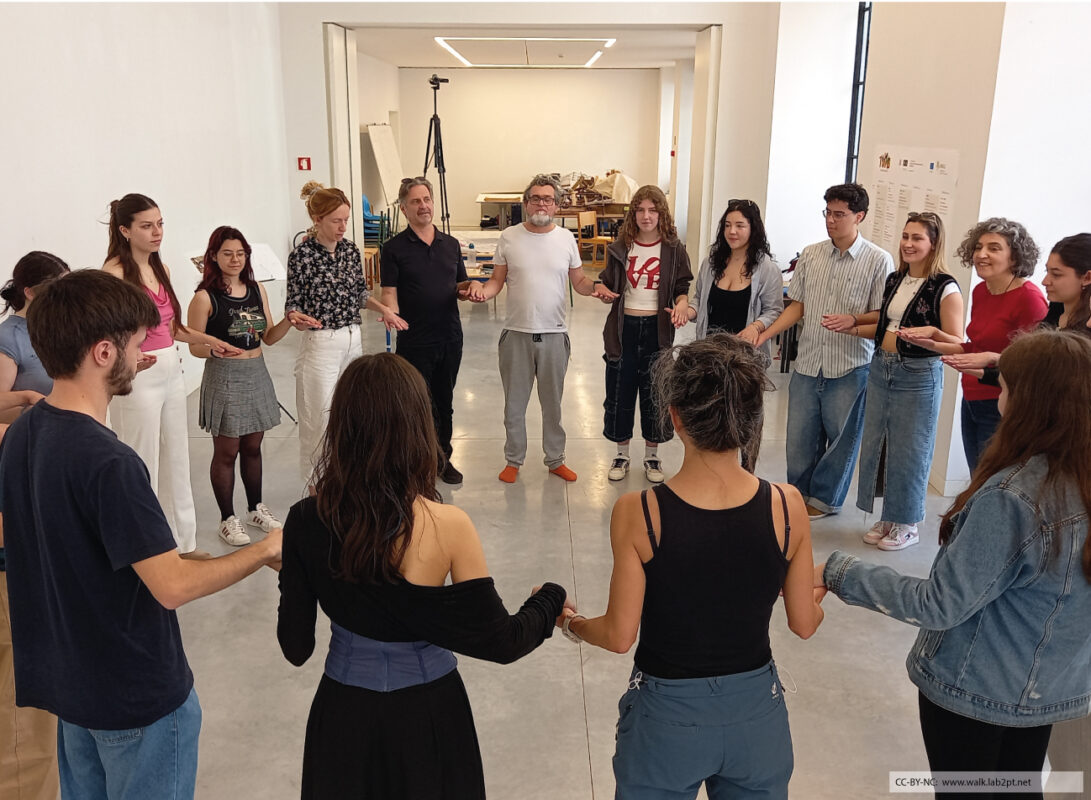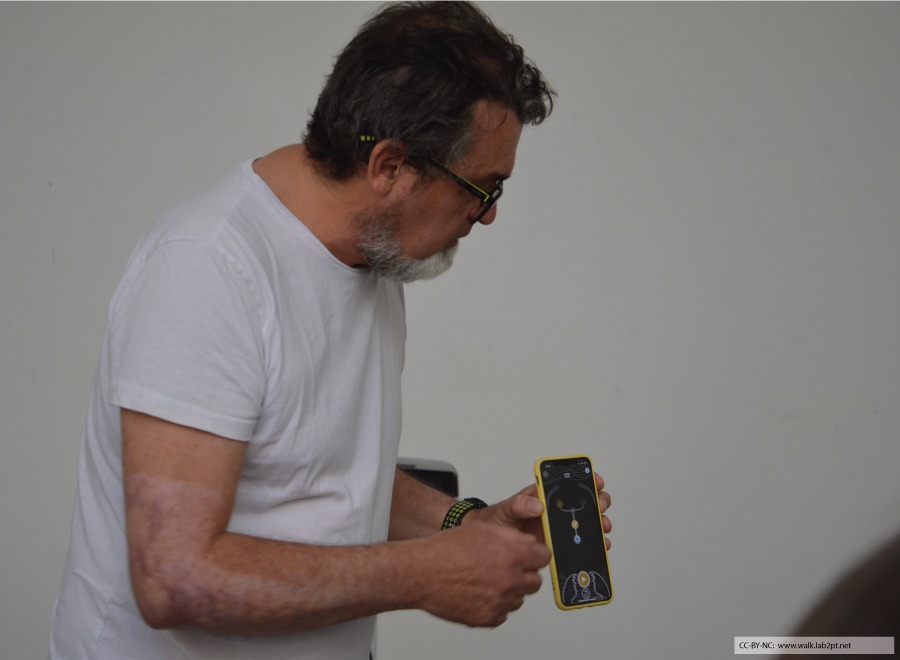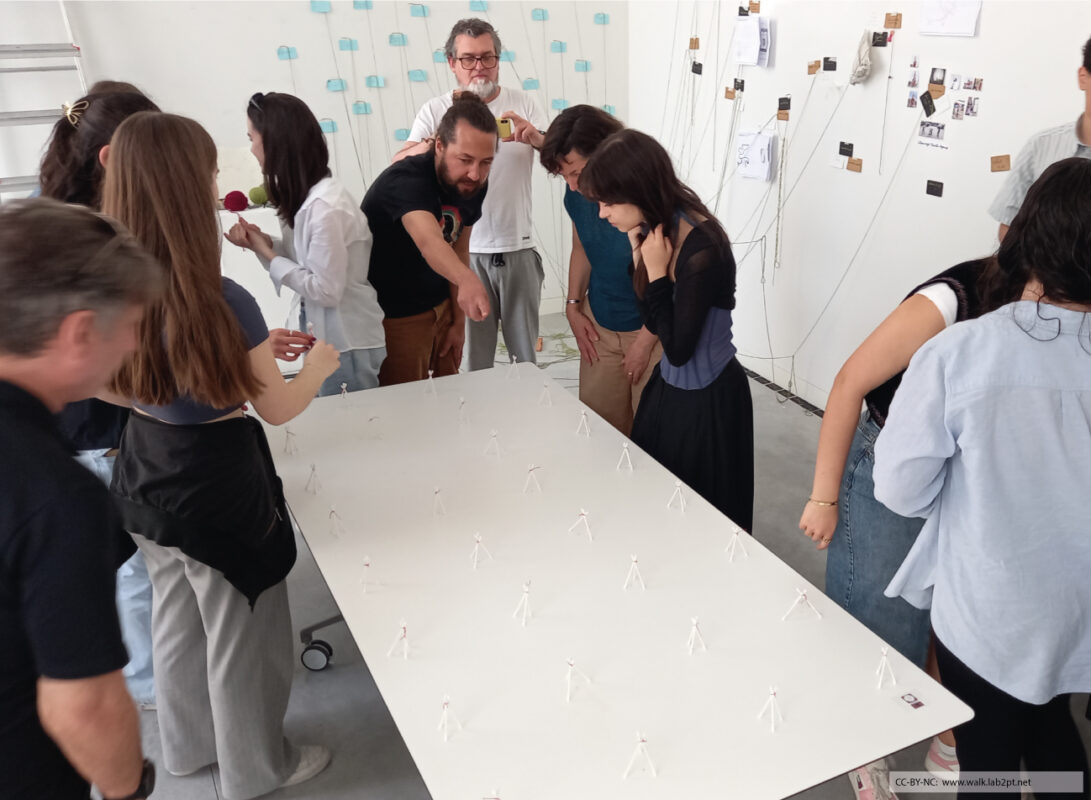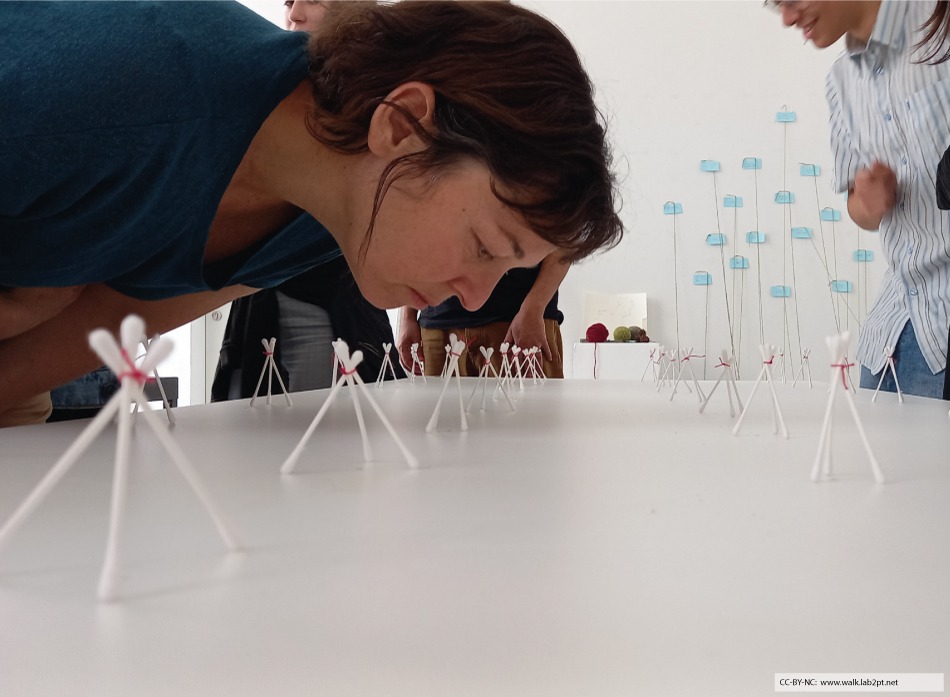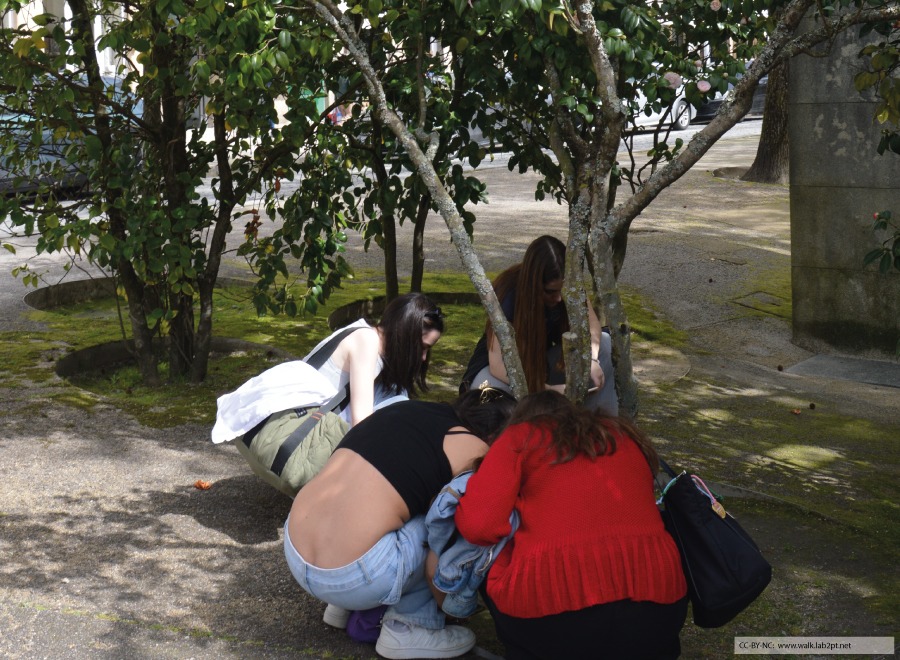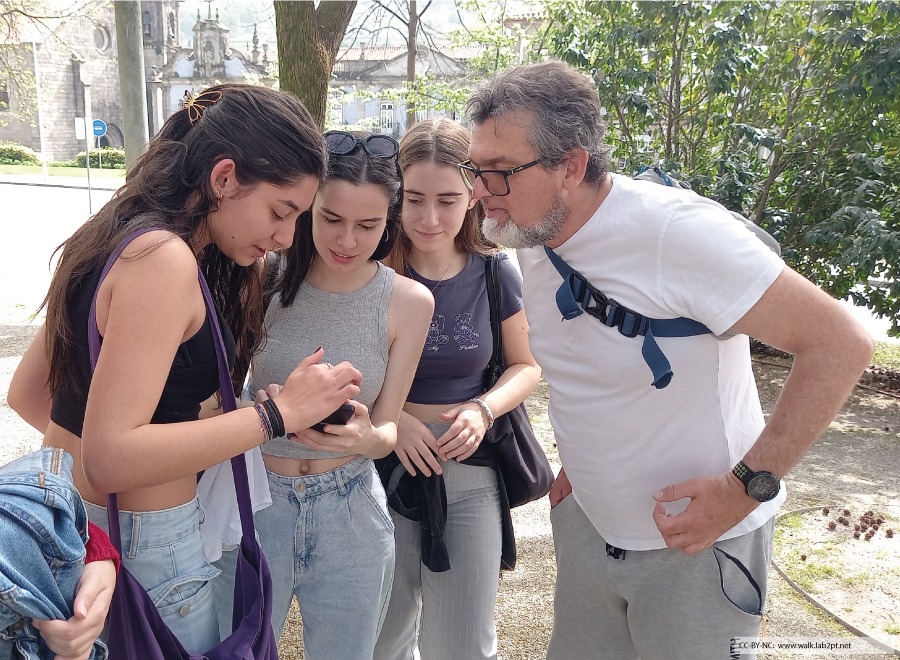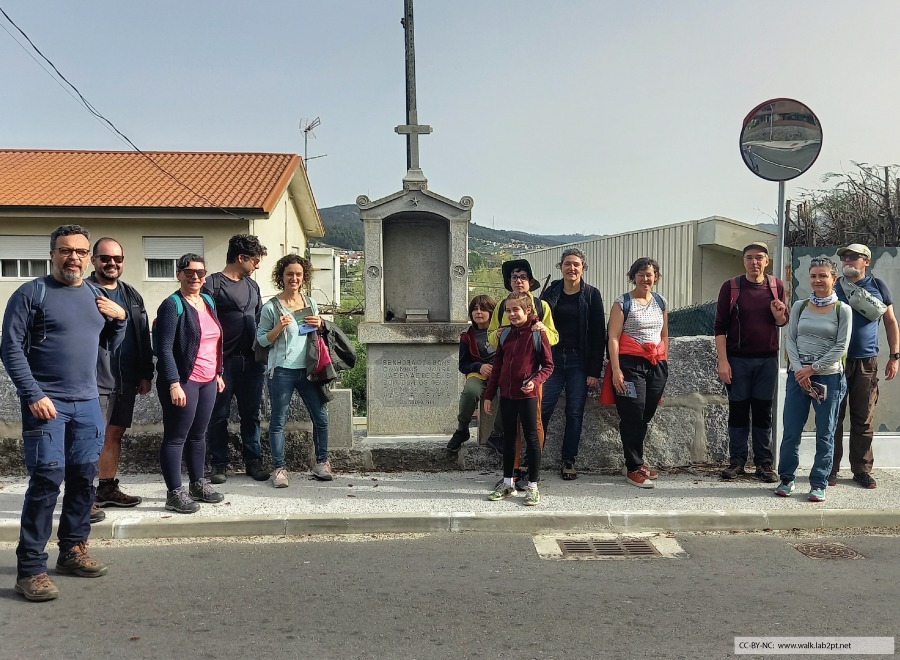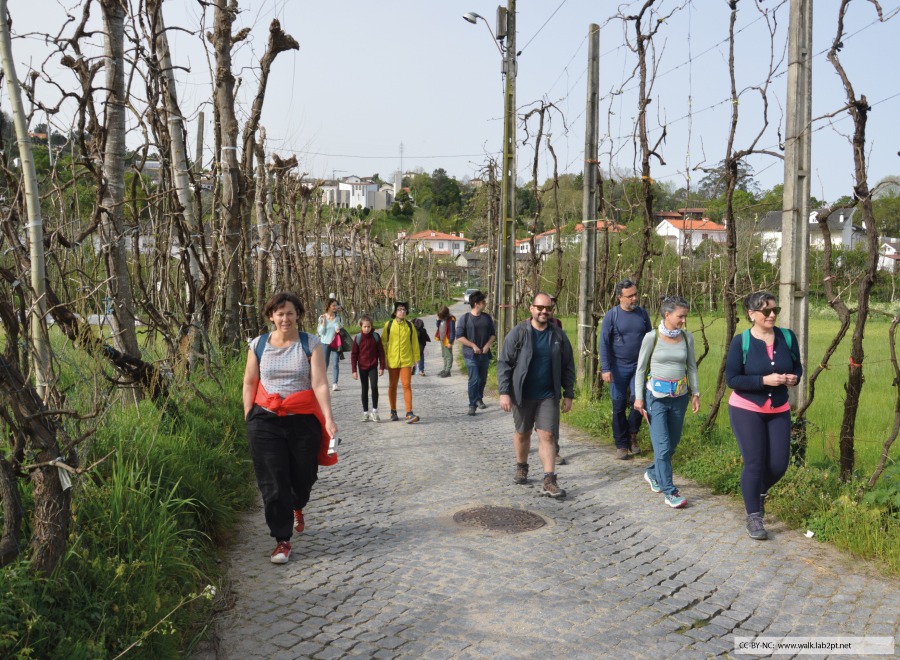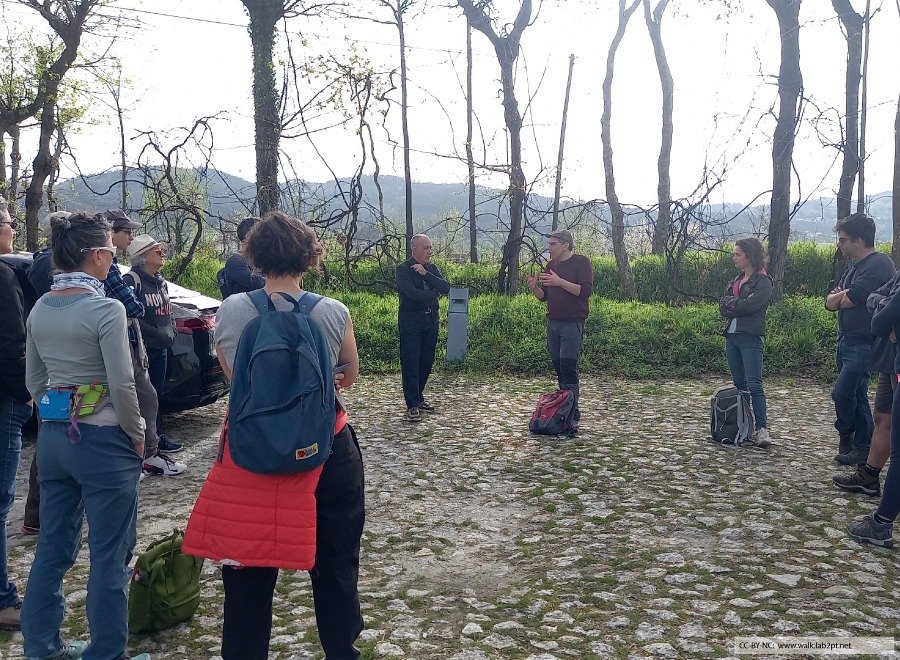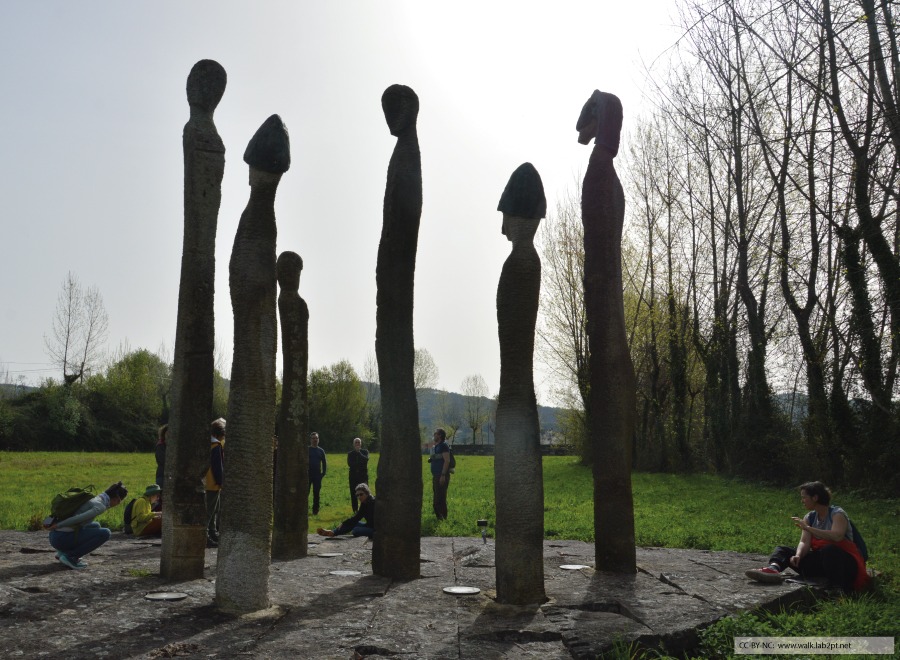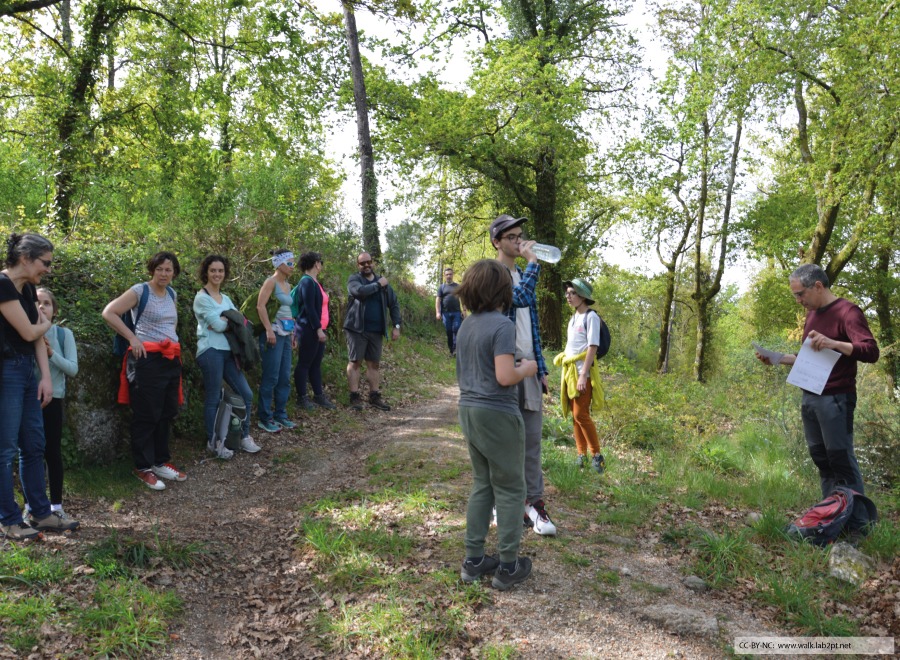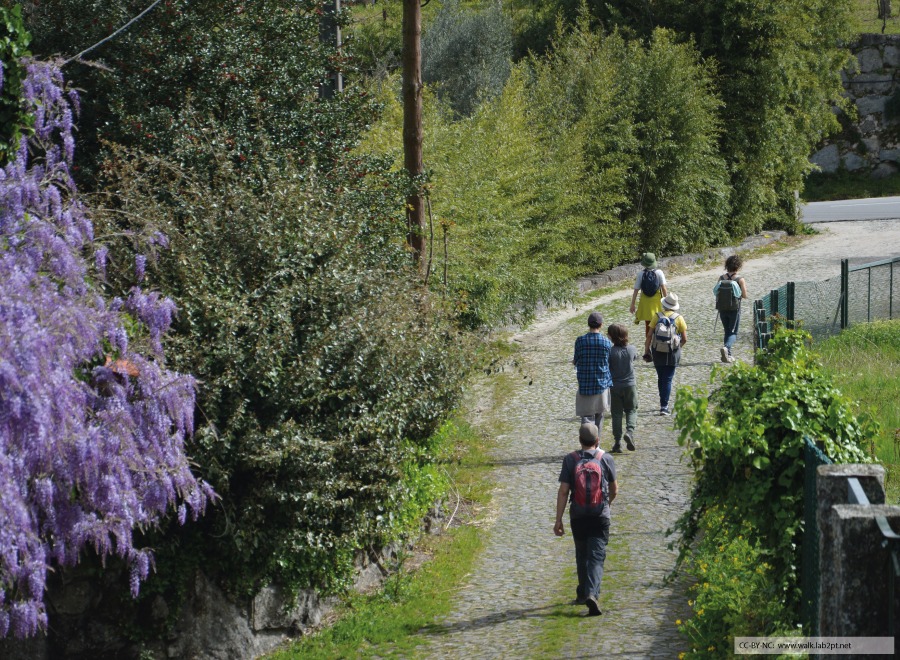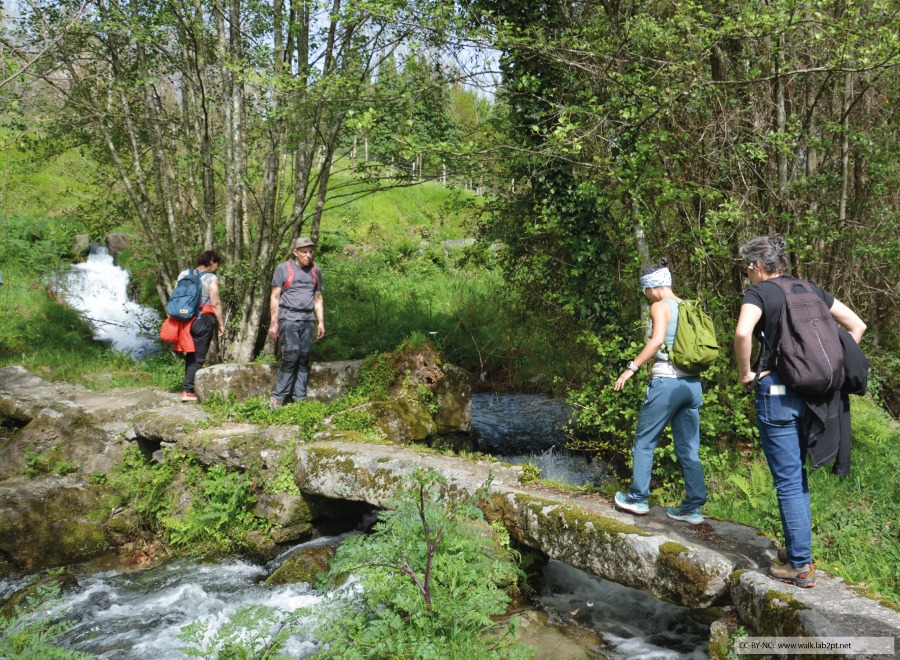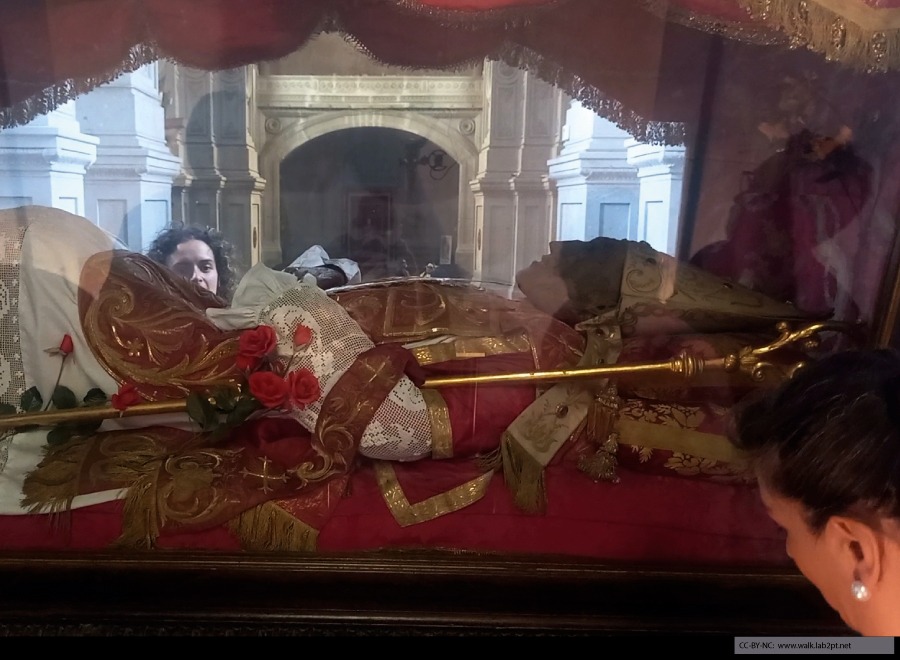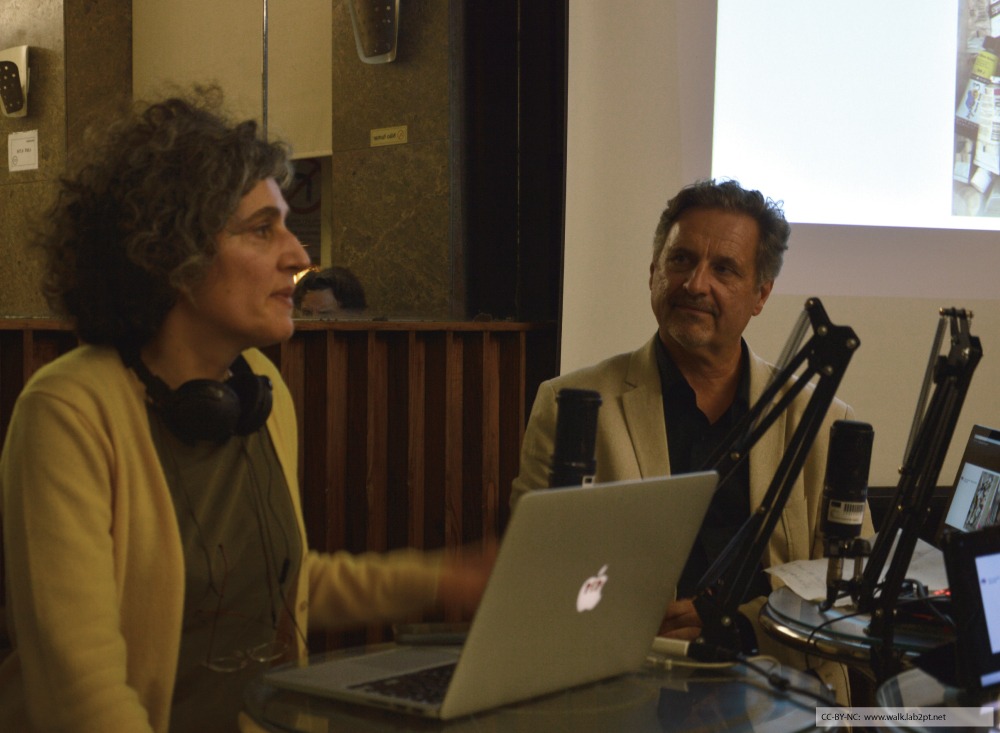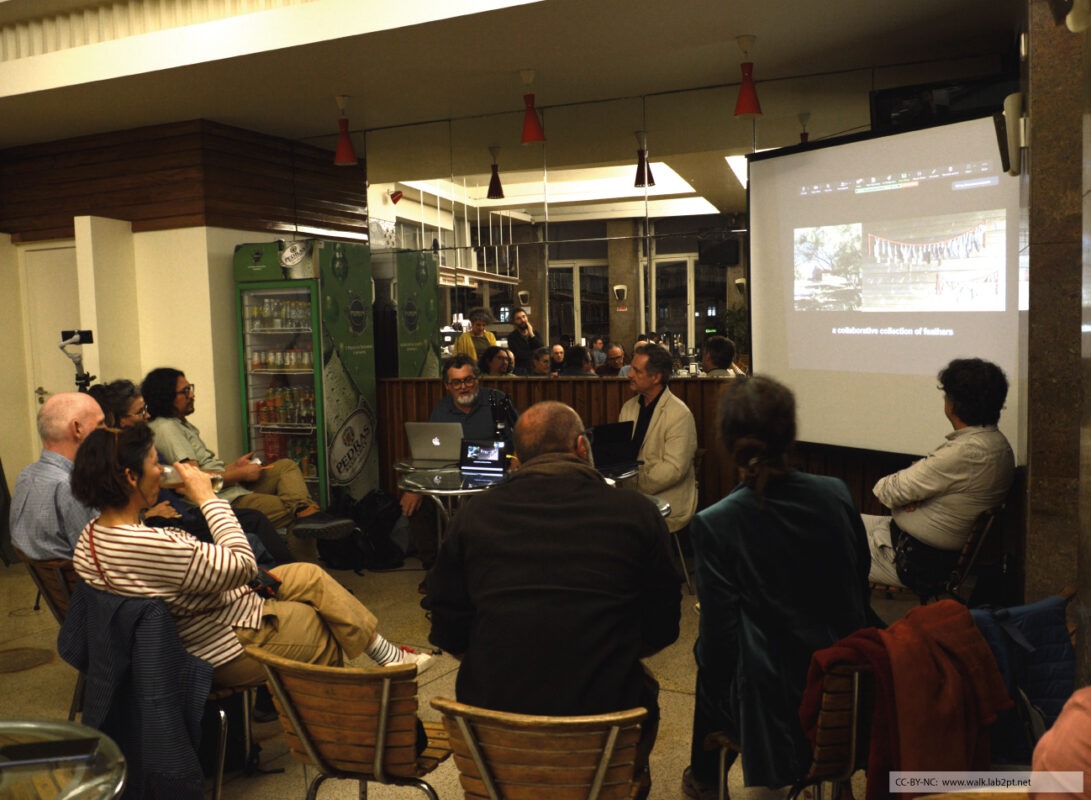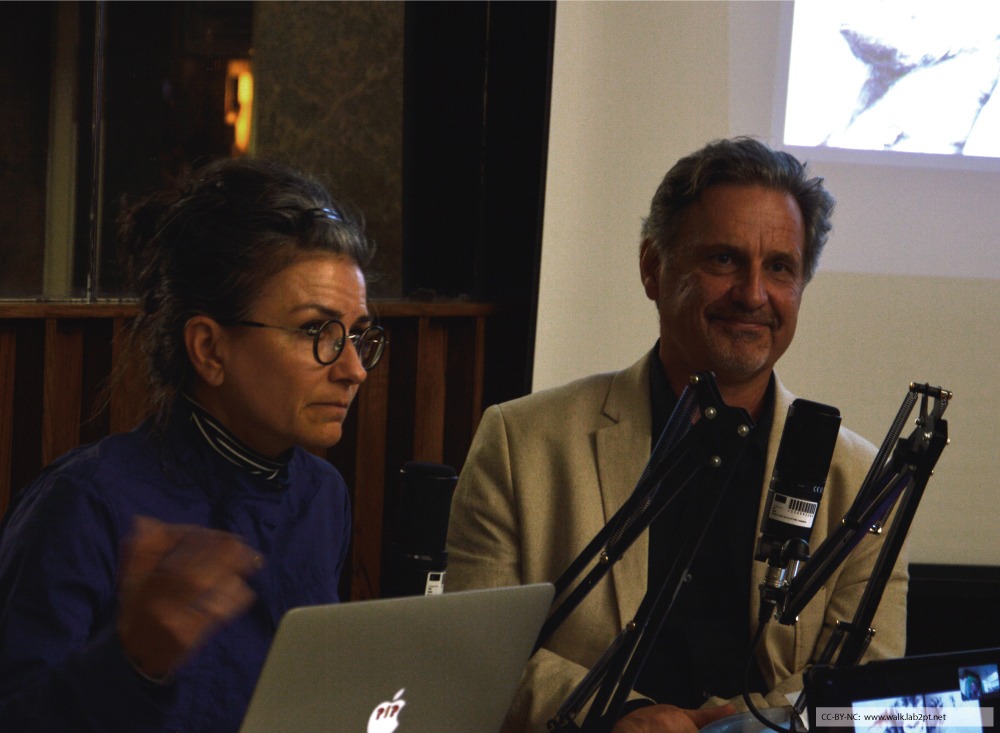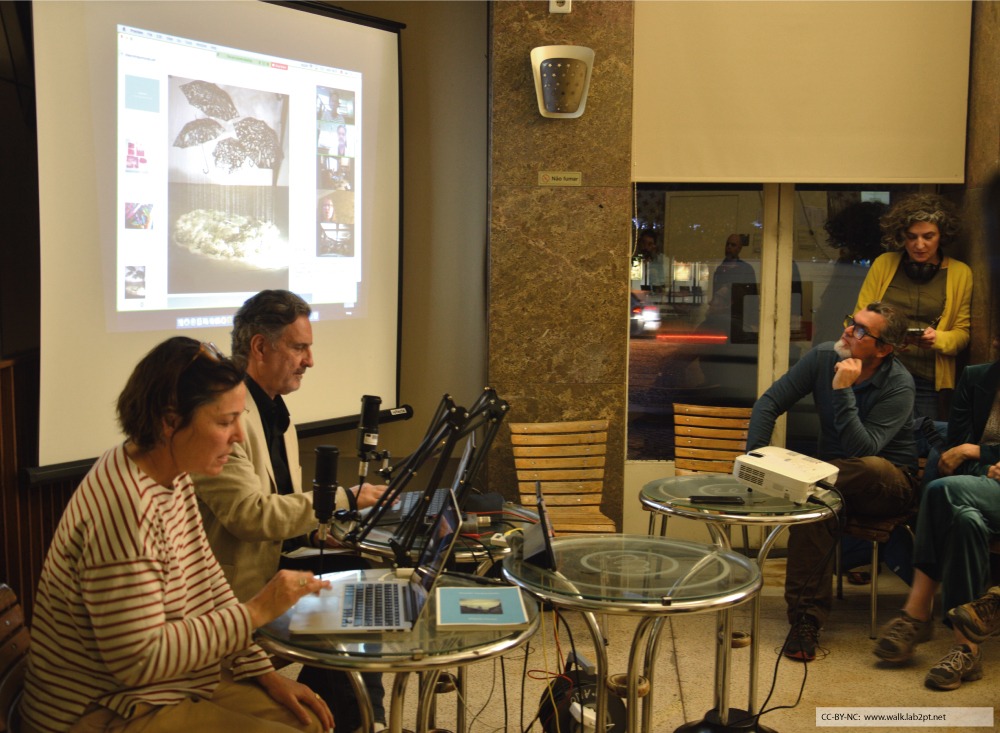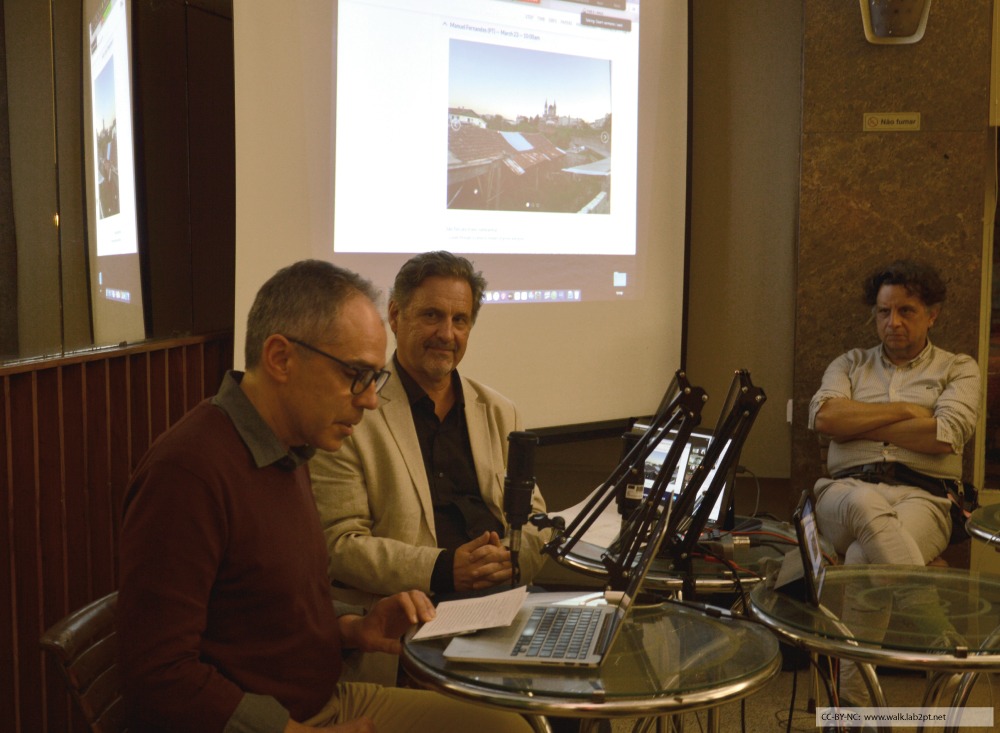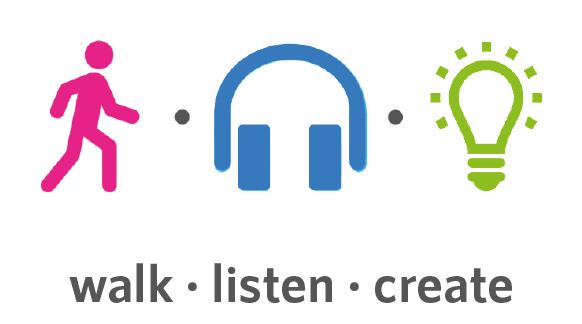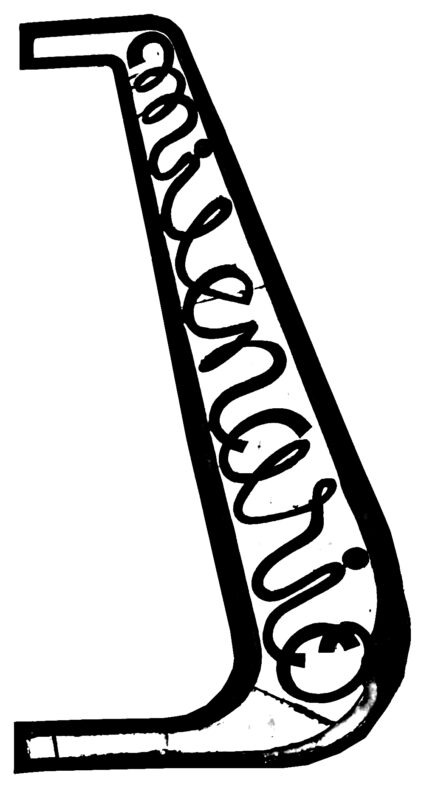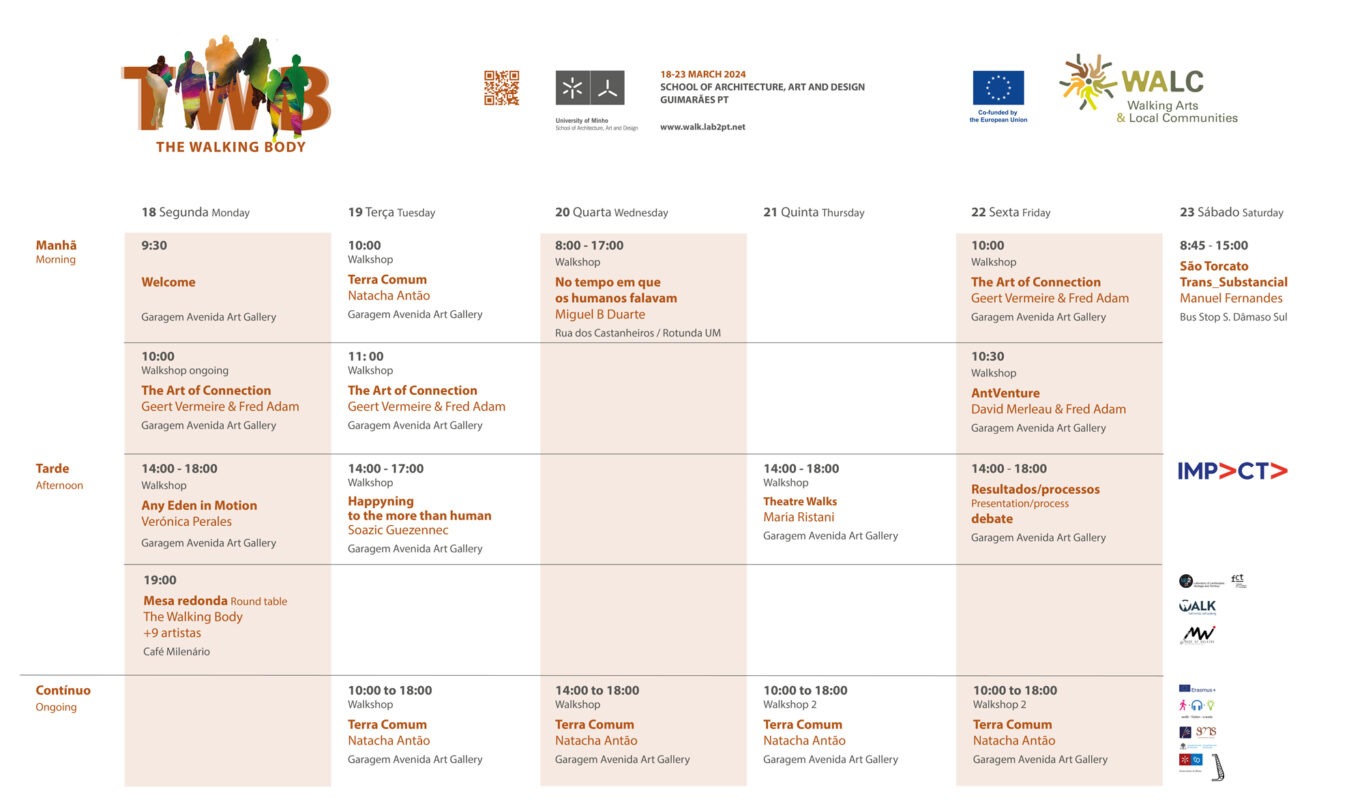Practice 1
The concentric rings of perception
The aim of the activity is to introduce the art of deep listening and deep looking preferably outdoors. It is a practice to expand our ability to listen and look carefully around us in 360 degrees and over a great distance. The practice covers several senses and addresses the need for people in difficult health circumstances to understand that we can improve our sense of space and improve our mobility, without the necessity to move physically. The practice is organized in 3 imaginary concentric rings, from the perception of our own body to the visual and sonic horizons. Inspired by how the owls and bats map space with sounds, the participants learn to map a very detailed and diverse landscape they can navigate with their imagination with great accuracy.
Find an interesting spot to sit in an open space where you can see far away and listen clearly to a great number of sounds. Draw 3 concentric rings on a paper and map the sounds you are hearing around you during 15 minutes. You can draw the motion of sounds in space if you want. You can also mark possible sounds, the ones you can not hear but you can guess with your vision. Discover your visual and sonic horizon at the edges of the third larger circle. Be aware of how the animals are moving in the space around you, did they go away or did they come closer?
Practice 2
Body and ears, the foxes and the owls
The aim of the activity is to develop an awareness of each other and our own body and senses. It is meant to celebrate the intelligence of the foxes and the owls as a source of inspiration to learn from nature and improve the communication between people. The practice covers several senses and the body in motion, addressing the need for people in difficult health circumstances to go beyond the limitations of basic human communication.
We are becoming animals in our imagination to understand the creativity of Nature and become aware that we are part of it. It is a dmonstration of the difference between our bodies and senses, not as a barrier but as the same force of diversity and creativity carrying life on Earth.
Night is falling in the forest inhabited by owls, a family of foxes have to cross the forest without being detected by the amazing ears of the owls. Two groups of players successively become an owl to listen carefully whith their eyes closed. Becoming a fox is about learning a “fox walk” and to be as silent as possible to not awaken the owls. This practice is usually done outdoors in a natural environment with some vegetation, branches and little stones on the ground.
Practice 3
Belonging to nature with our voice
The aim of the practice is to show how we are always connected with our surroundings, it can be with humans or with other beings in nature. Even if we are not conscious about it, our presence in a place makes us part of an ongoing polyphony of voices and sounds.
People in difficult health circumstances can realize they are always part of this orchestra and cultivate a sense of belonging with the planet here and now.
Inspired by the starling birds, this activity is inviting people to resonate together with their direct surroundings by mimicking the ambient sounds. This practice helps us to be more aware of the activity around us and create a sense of empathy by becoming the other for a moment.
Practice 4
The Spider web giant ear
The aim of this activity is to introduce the use of the body as a sensory organ to listen to the others. It draws on the intelligence of spiders using their webs as a giant ear to detect the vibrations of the air. This practice is addressing people in difficult health circumstances by showing how we can train our senses and challenge the idea of strictly separate sensory organs, looking into a more holistic approach of our body.
Did you know that spiders do not have ears as we do but they are able to listen to you with their legs! How? By using their web as a big ear. Let’s build a giant spider web together and use it to listen to each other.
Practice 5
Buzzing Sessions: a score for buzzers
Based on more than human language, interspecies language, plant communication (bio-acoustics) this session introduces communication beyond words, communication through connection with sound and vibration, inspired by the language of bees. This practice consists of reciting collectively a poem in the language of nature and was created together with artist Stefaan van Biesen who made a visual score of buzzing sounds written by poet Geert Vermeire.
Bee language is a language beyond sound, it is mostly spatial and vibrational. Its syntax is based on something very different from human language: the type, frequency, angle and amplitude of vibrations made by the bees, as they move through space. In the case of bees they move in an 8 pattern. Stefaan van Biesen and Geert Vermeire invite the public to walk – immersing and vibrating in nature while listening to what is around them. The language of bees happens through nuanced movements, sounds and vibrations that are hardly hearable and subtle. This exercise is exactly about relating with nature and other humans as part of this nature, vibrating and listening carefully. In the video demonstrating the exercise, poet Geert Vermeire “conducts” a visual score made by Stefaan van Biesen. The group of participants recite each one of 14 buzzing sounds till they vibrate as one. The exercise is spontaneous, the score is an invitation to listen and to be in the outdoors, resonating as much with the others present as with the place, and as such the outcome is different each time.
Participants nr: unlimited
Duration: 30-60 min
Materials:
Meeting point: Art gallery Garagem Avenida
Meeting time: 18 10am, 19 11am, 22 10am
Any Eden in Motion
The Garden of Eden was (and is) the terrestrial paradise. Throughout the history of Western Art, there have been artists aplenty who have dealt with the subject, such as Masaccio, Hieronymus Bosch, Rubens, and more. This ideal garden was a place where nature was not inimical in any artistic rendition (by nature we understand everything that is not human, and which includes plants, animals, as well as other elements). The enemy is the one that means ill for us, involving a threat. Against this background, this statement is paradoxical given that human beings entail the greatest threat to the ideal garden…
As I have proposed in previous workshops, the main idea behind this proposal consists of trying to put ourselves in the place of an animal-other or any living being-other. For that purpose, I will make use of the “Garden of Eden” concept, since its formulation changes utterly depending on who the dwellers of paradise are. By way of example, the Garden of Eden for a cow or for a camel would differ greatly, and likewise for a domestic dog. Cows, camels, dust mites, and our very selves belong to the planetary body. Therefore, we are all potential Gardens of Eden as well.
What we will be “walking about” this workshop:
-Reflecting upon the concepts of Paradise and Garden of Eden, as ideal places to inhabit, and to understand that the projections of Eden were always made from an anthropocentric perspective; or an androcentric, more like…
-Conceiving that our own bodies, which belong to the planetary body, can also be a part of Eden. The Garden of Eden is at hand… it is within us as well.
-Imagining how other beings express wellbeing and satisfaction.
-Drawing, I forgot to say it! Eden comes here to draw, to draw the “corpuscular diversity in motion” that integrates it-self.
Participants nr: 30
Duration: 4H
Materials:
Meeting point: Art gallery Garagem Avenida
Meeting time: 2pm
Common ground: Embroidering the Map of Guimarães’ Trees
Representation can be a tool of desire, encounter or recognition. Producing a map is therefore this space of possibility and dialogue, a place of possible speech and presented dreams.
Participants are invited to share the location of a tree they know, its place in their life and history, inscribing it on the city map. Through the collective construction of this map we will identify, find and discover the trees that live in Guimarães and share their space with us and with other species. This map will be constructed in embroidery, with cotton thread on linen, crossing knowledge that is whispered in this territory.
Participants nr: no limit. Participants will use embroidery needles.
Duration: continuous, concurrent with the opening of the space.
Materials: Linen and cotton.
Meeting point: Gallery Garagem Avenida
Meeting time: according to opening times
Happyning to the more than humans’
HappyTourists is a travel agency that hijacks the codes of the tourism industry to encourage alternative, artistic travels. It is a provocative and disruptive project, founded in Berlin in 2018, with the aim of raising awareness about how mass tourism impacts the environment, while inventing new ways to be (or not to be) a tourist. HappyTourists’ mission is to bring serendipity, chaos and disorder into the tourism industry, by using artistic practice, in order to awaken critical thinking and open up new spaces to explore.
Convinced that discovery is more about personal experience than expected outcomes, HappyTourists designs creative impulses that set people in motion without imposing a destination. Our protocols subvert the codes of the tourism industry to divert tourists from attractions and allow for unexpected encounters. Like any travel agency, Happytourists organises tours in the city called Happynings, which are unguided and lead tourists “where nobody is going, because there is nothing to see ». Happynings are for international tourists as well as domestic travellers or inhabitants of the city willing to change perspective on their own environment. Happynings connect individual sensibilities to build a trip as a collective piece of art. Participants interpret abstract, poetic and offbeat directions to curate their own derive. Once in motion, they are encouraged to follow their instinct and perform the place instead of consuming it.
For this workshop, HappyTourists has designed a specific itinerary entitled “Happyning to the more-than-humans’»
Divided into groups, students will select a series of prompts designed to forster interpretation, creativity, audace and critical thinking. Following those instructions, students will set off on a journey that will take them through the city as strangers in the ancient kingdom of ants, stray cats and bats. They might visit burrows, ask trees for directions or come across some wild, undomesticated inhabitants. They’ll find souvenirs in the store of scents and bird songs, or collect clouds and air breezes before coming back together to share their experiences.
Experiences will be documented through videos, photographs, stories and any other forms invented by the adventurers. They will be archived to create an alternative tourist guide to the land of the more-than-humans in the form of a small exhibition. This guide will provide future visitors with suggestions, knowledge and instructions for experimenting with a new way of being or not being a tourist, creating unexpected “situations” that can be poetic and absurd, but always space-making and political.
Participants nr: max. 30
Duration: 3H
Materials:
Meeting point: Art gallery Garagem Avenida
Meeting time: 2pm
In the days when humans could talk
The protagonists of stories from the time when animals spoke are now being transformed by a paradigm developed by machines and unnatural intelligences. If there was a time when humans communicated with each other and with animals in a language of understanding, the rift drawn by God seems to be getting deeper and deeper.
This walk, which runs from the Azurém Campus to Citânia de Briteiros and is approximately 16 km long, seeks evidence of the memory of a time when much was learned from fish, stones and trees, but also from relationships with other non-human entities.
This practical possibility seeks, through the experience of overlapping the narrative space with the space traversed, a reconnection with the territory and the forms resident in its environment.
Participants nr.: 25-30
Duration: 7H-9H
Material: Água, fruta de bolso, almoço volante
Meeting point: Azurém, Rua dos Castanheiros/ Rotunda da Universidade
https://maps.app.goo.gl/DecVRkCyu6ssF86K7
Meeting time: 8:00 am
Logistical needs:
Travel- Guimabus (linha 163- return)
Bus stop Briteiros S. Salvador (Almeida)
https://maps.app.goo.gl/KQ4DbXQQEQ9Z49Wu5
Theatre Walks
Theatre doors are no longer sealed nowadays and performance often ventures outside. It embraces walking as a “theatrical scenario” and goes in quest of new, mobile, non-material or outdoor spatialities to replace or amplify the conventional stage. Site-specific and site-generic theatre events, walking performances, audio-guided drama, mobile theatre(s) and performance interventions, all flesh a theatre beyond theatres, walking away from the black box and into new stages. A recent example comes from the German theatre collective Rimini Protokoll and their latest work, The Walks, which is described by the group as follows:
“The Walks grasps walking as a theatrical scenario – an audio-guided walk in parks, a staged walk in supermarkets or timed interactions on waters. In every city, voices, sounds, and music turn familiar places into sites and landscapes into stages, step by step through storytelling, dialogical situations, choreographed discoveries, or musical and rhythmic variations on walking”
As theatre walks on and away to create new stages, it also re-imagines spectatorship, access, audience community and participation. The roles meddle and traditional stage dichotomies dissolve. Such experimentation with spatial dynamics in performance is not, however, only an aesthetic choice, but more a political gesture of (re)action and socio-cultural intervention. Theatre extends and re-creates the walls of the auditorium to intervene in and re-articulate the space of the polis to which it belongs. In walking, it (re)claims urban space, problematizes lived space, contests received spatial boundaries and identities, and engages with ideas of new citizenship through the new spectatorship forms that it activates. Above all, it invites its audiences to engage with their surrounding environment, thus extending its lens to the non- or the more-than- human and the narratives it has to share.
Our workshop will explore such walking theatre events: we will watch, discuss and think through specific cases of walking performance (with examples mainly from the Anglophone world) and we’ll also design and experience our own theatre event on-the-go. What happens when the city turns into a stage? How is the familiar re-written and re-claimed when theatre transformation takes the lead?
Participants nr.: max, 25
Duration: max 4 hours
Materials:
Meeting point: Art gallery Garagem Avenida
Meeting time: 2pm
AntVenture
Summary:
Antventure is an interactive storytelling app that brings everyone the inside story of how the ants beneath their feet understand the world around them. When walking, the participant experiences the daily lives of four different types of common ants.
Description:
The AntVenture project is an artistic attempt to understand how ants not only perceive themselves as “natural beings living among other” but also to speculate how an ant might come to comprehend the very essence of what it means to be human.
Both ants and humans have come to dominate the Earth through the evolution of sociality. And both can be considered “technological” in their own right, entities able to harness engineering and agricultural innovations, where individuals can extend themselves beyond their own physical limitations with “mass communication”. In short, both ants and humans are “world builders””with the ability to completely alter landscapes and develop complex meaning and “togetherness”.
However, humans and ants differ significantly in the fact that if all humans were to disappear from the planet–even with the state of our environment today–it is likely the Earth would adapt and persevere, but if ants were to disappear, it is probable that entire ecosystems would simply collapse into extinction.
AntVenture is a four part series of experiential audio dramas housed in a storytelling-walking app, told from the perspective of four different genera of common ants. These cheeky and punchy works of fiction are based in scientific research and accessed through a unique interactive choose-your-own-adventure walking mobile app.
This work is experiential because the fate of the ant in each episode is dependent on you, the listener. At various places throughout the multi-branching narrative, you are prompted to look at your mobile screen to answer the Y/N Choice Card, a question about the sensory experience you are currently having of your environment at that particular moment.
As you the AntVenture app creates for you the space–if only for a brief moment–to purposefully contemplate your surroundings reminding us all that in even the most concrete laden environments, nature–in the form and essence of an ant– is never really ever that far away.
Many talented people contributed to the AntVenture project. Fred Adam and Carlos Garcia (Spain) are the app and online development team, original music created by Emilyn Stam and John Williams (Toronto CA), the voice of the ants by Tracy Michailidis (Toronto). Script-editing by Mario el Jamal (Ottawa CA), and fact Checking by Dr. Terry McGlynn (San Diego USA). Recorded at Ken Whiteley Studios (Toronto) by Nik Tjelios.
AntVenture was researched, written, produced and narrated by David Merleau. We acknowledge the support of the Canada Council for the Arts.
Participants nr: unlimited
Duration: 60 min (inclusive introduction)
Materials: mobile device/smartphone with mobile data
Meeting point: Art gallery Garagem Avenida
Meeting time: 10:30 am

São Torcato trans_substantial
– a walk through a valley in shades of green and grey
Located in the heart of a rural parish on the outskirts of Guimarães, the sanctuary of São Torcato is a massive granite building whose tall towers can be seen in the distance. Inside this eclectic-style sanctuary, something unexpected awaits the visitor: the mummified body of a man, dressed as if he were a bishop, exposed to the public curiosity. Nobody knows for sure who this body belongs to, although tradition identifies it as a non-canonical saint whose devotion dates back to medieval times. When seen in profile, we can glimpse a sui generis landscape represented on this body, with slopes and prominences, even a valley with a bridge, suggested by his arched hand – as if the surrounding landscape were transfigured into this body. Some distance away, in the place of Ataca, mysterious granite warriors stand in the middle of a field, slender and arranged in a strange rhythm. Some claim that a battle was held here in the 12th century, under the auspices of St Mamede, another holy man whose body has long since been lost, but whose name remains. Portugal, as a political entity, may have resulted from this battle, and a fierce debate persists around this idea. In the surrounding fields, corn, vines and wild herbs grow and bear fruit every year, indifferent to the discussion. Walking along this trans_substantial landscape, made up of green and grey, can open up new possibilities for the eye and the imagination.
Participants nr: 25 people (no problem if more or less people turn up)
Duration: 7H
Materials: clothing and footwear for walking, packed lunch
Meeting point: Art gallery Garagem Avenida
Meeting time: 8:45am at Bus stop S. Dâmaso Sul
https://maps.app.goo.gl/sS2WxhuE5jSiLmw17
Logistical walkshop needs:
travel – Guimabus (linha 62 – outward; linha 170 – return)
https://guimabus.pt/wp-content/uploads/2023/02/062-CIRCULAR-ALDAO-SELHO-S.LOURENCO.pdf
https://guimabus.pt/wp-content/uploads/2023/02/170-GUIMARAES-GONCA-VIA-STORCATO.pdf

 PORTUGUÊS
PORTUGUÊS